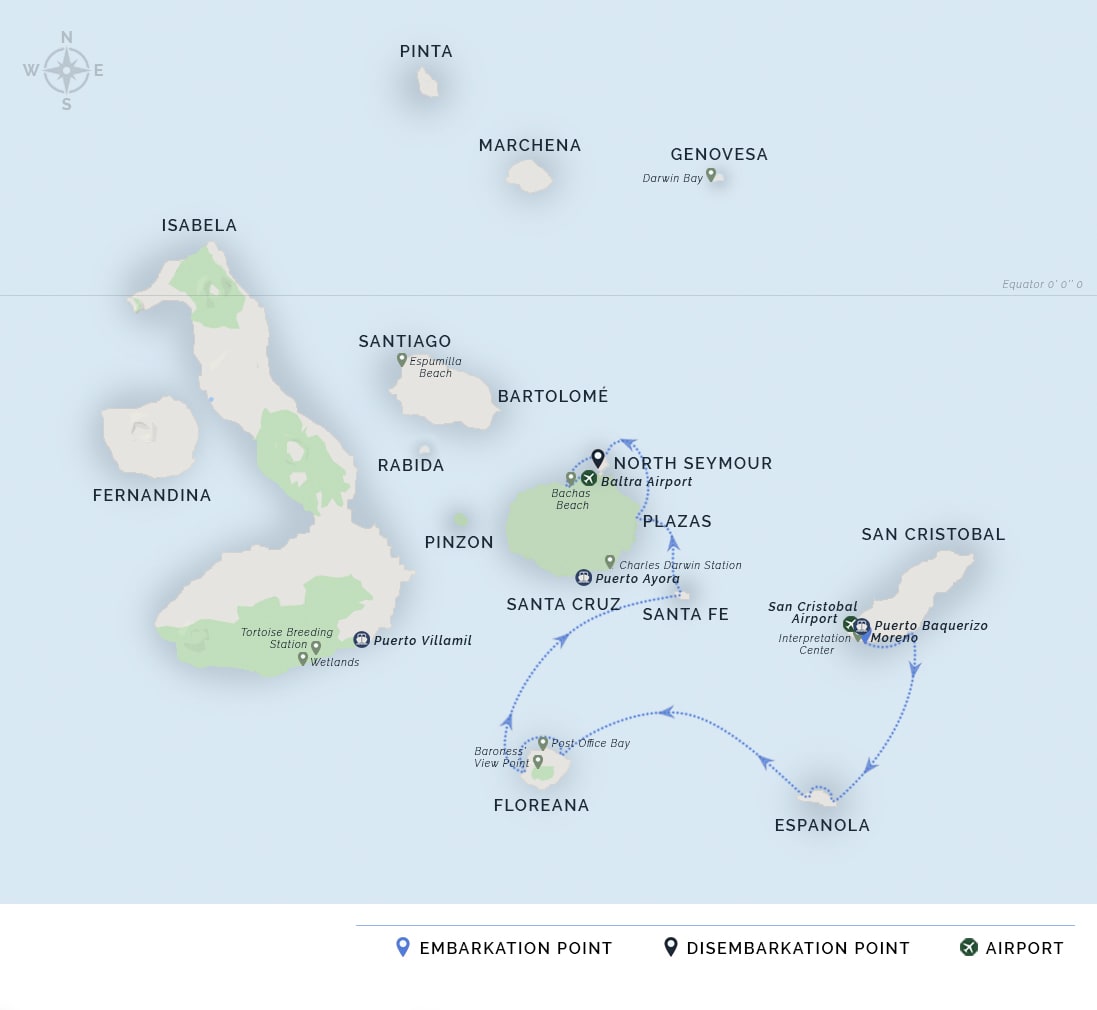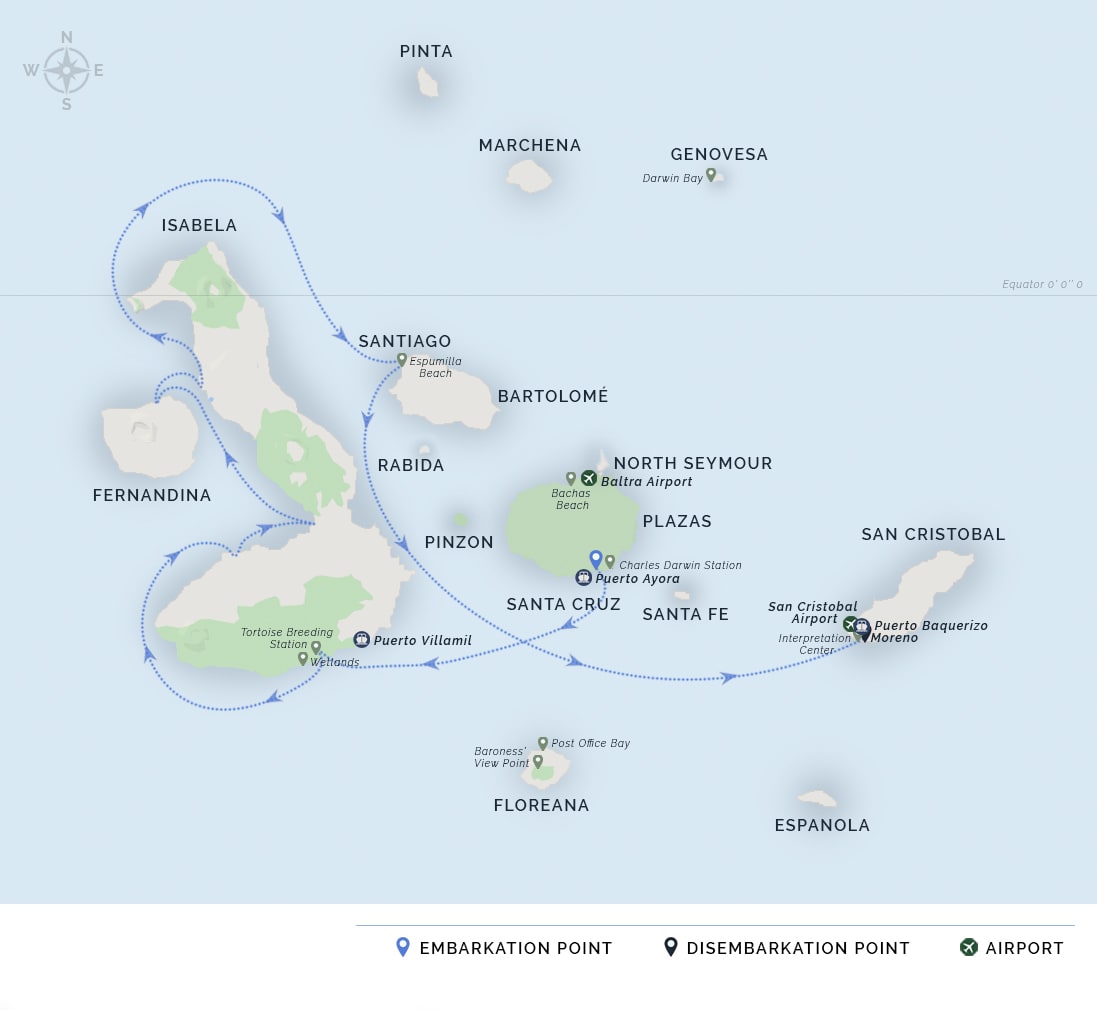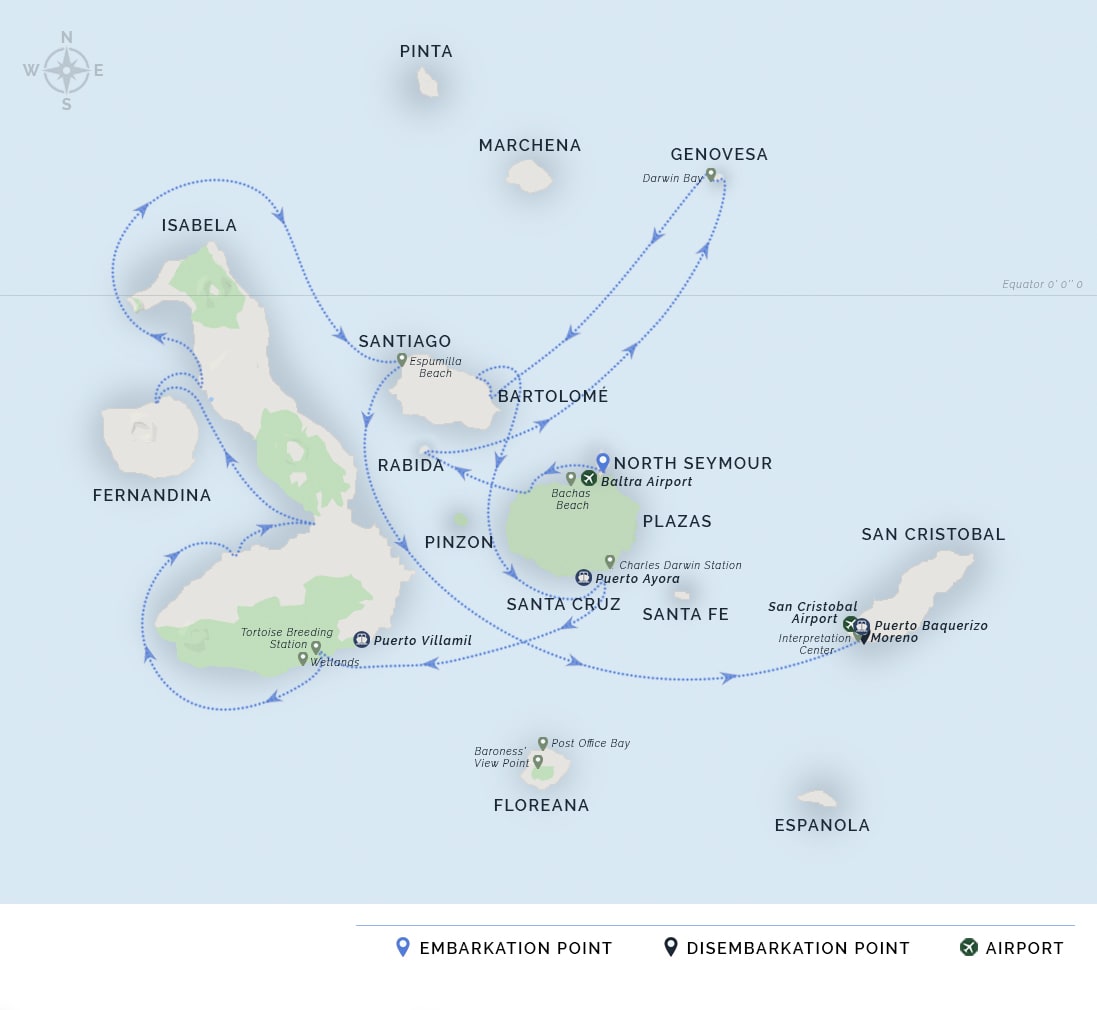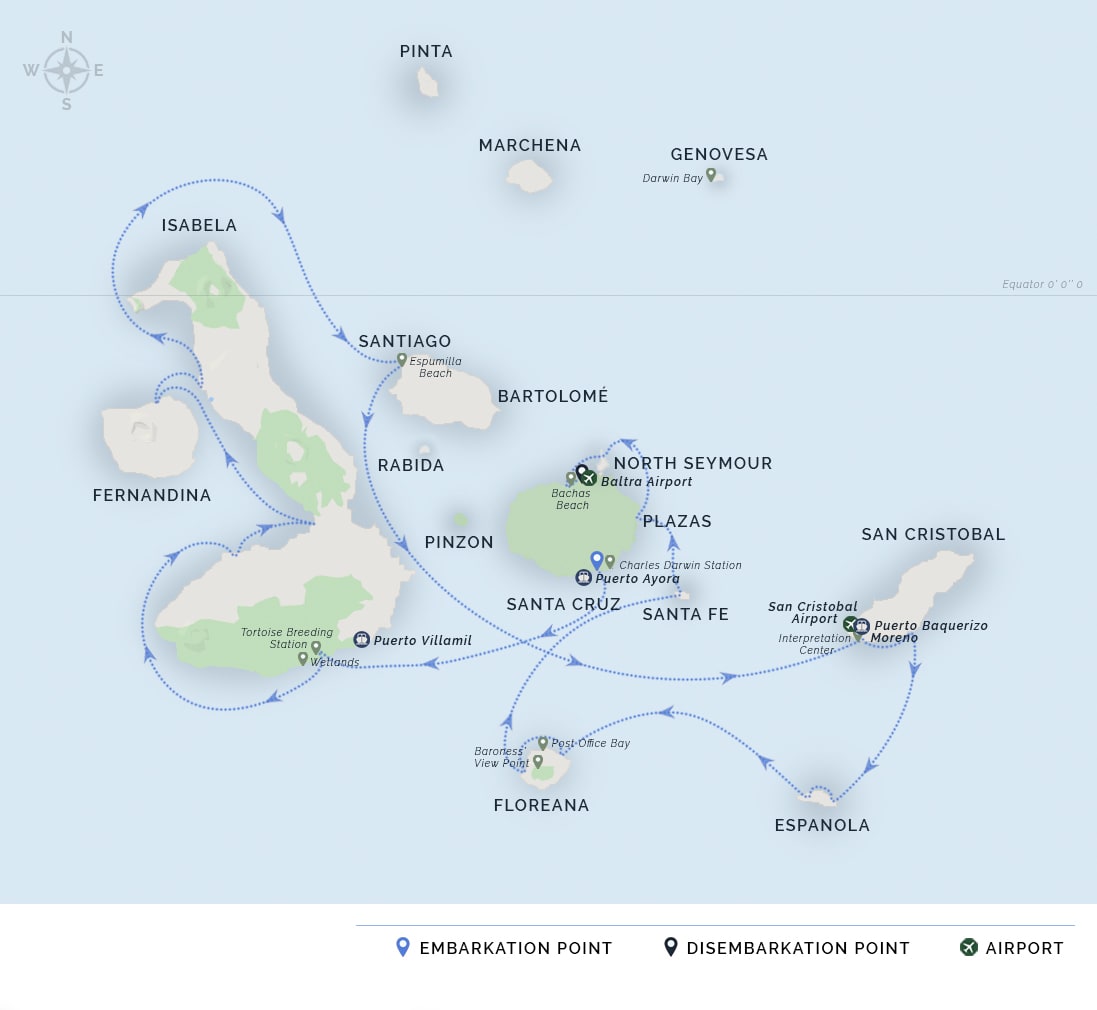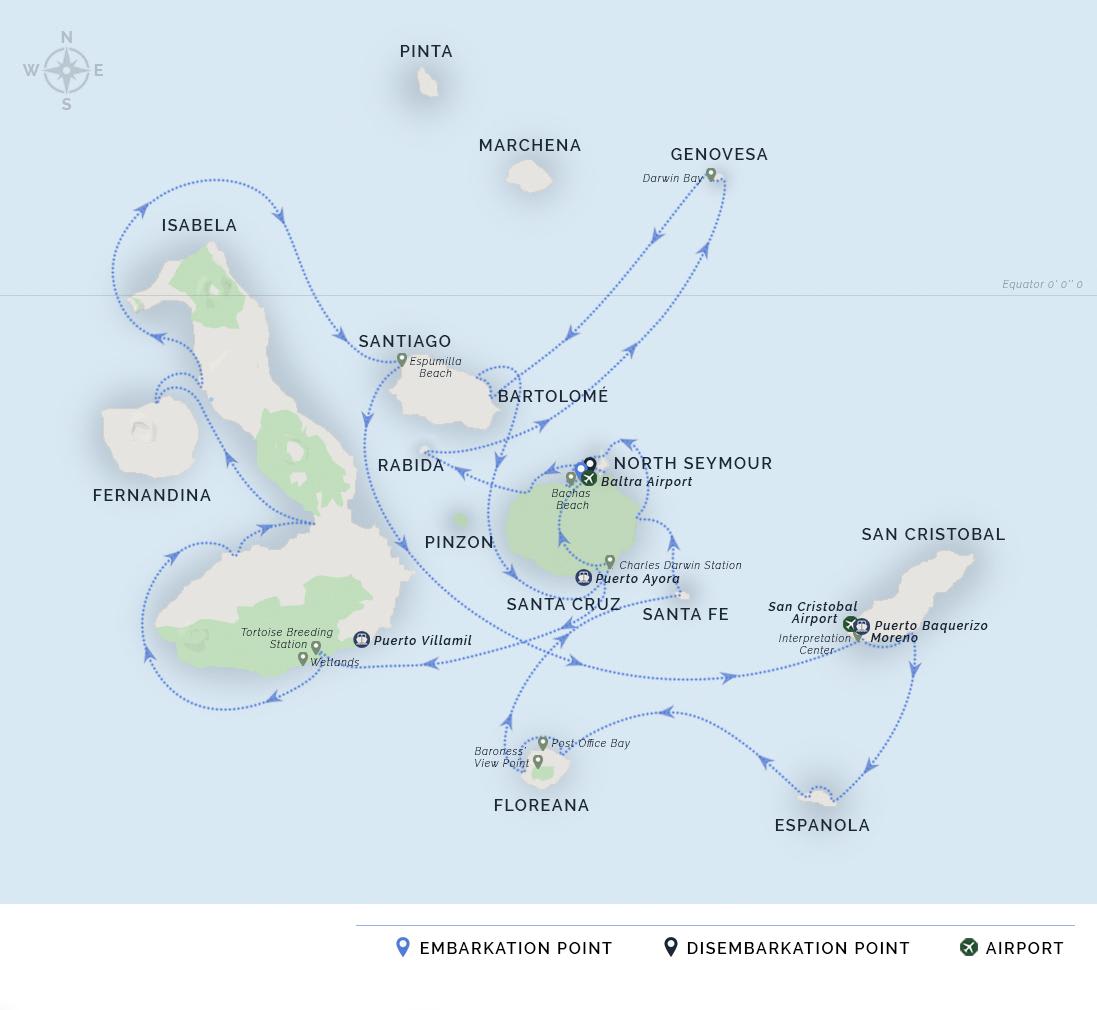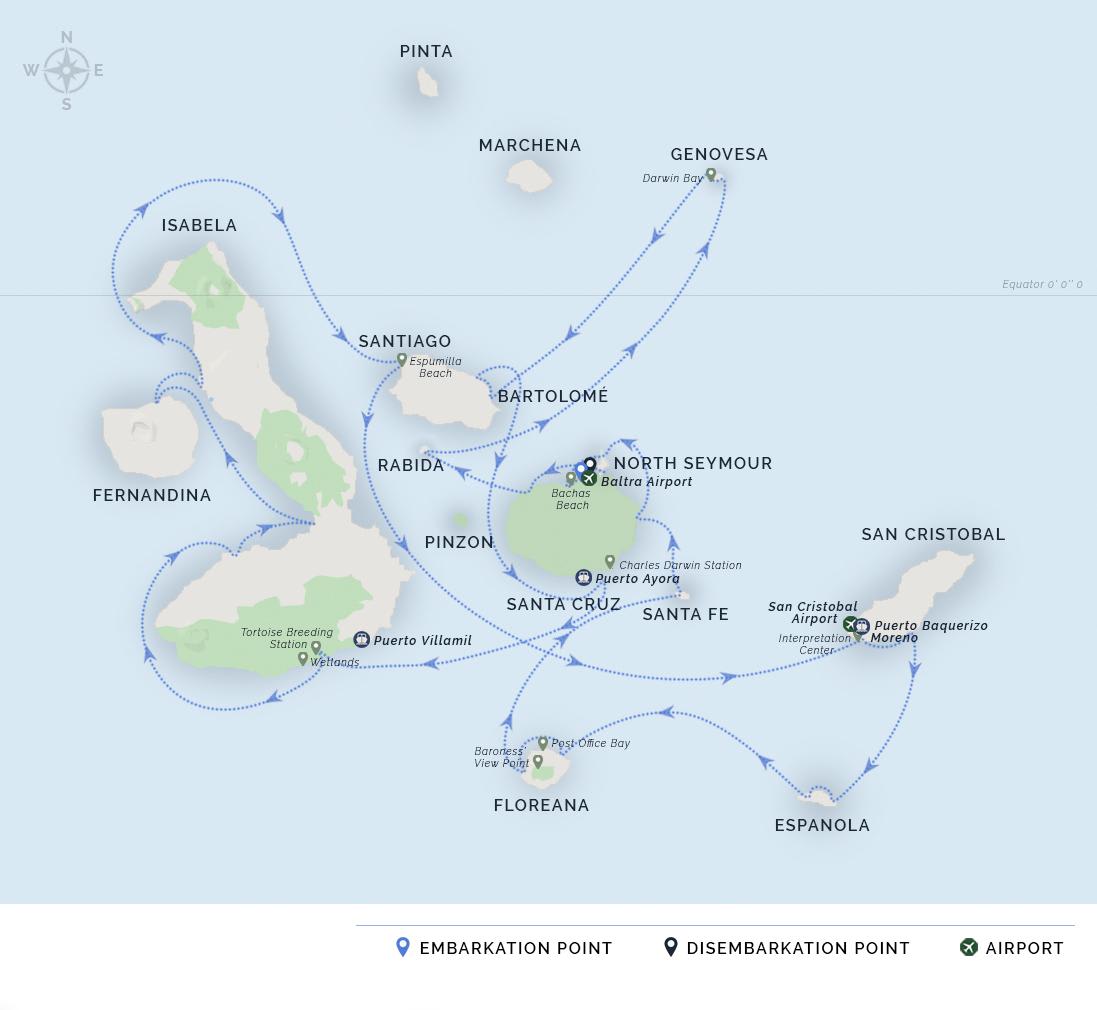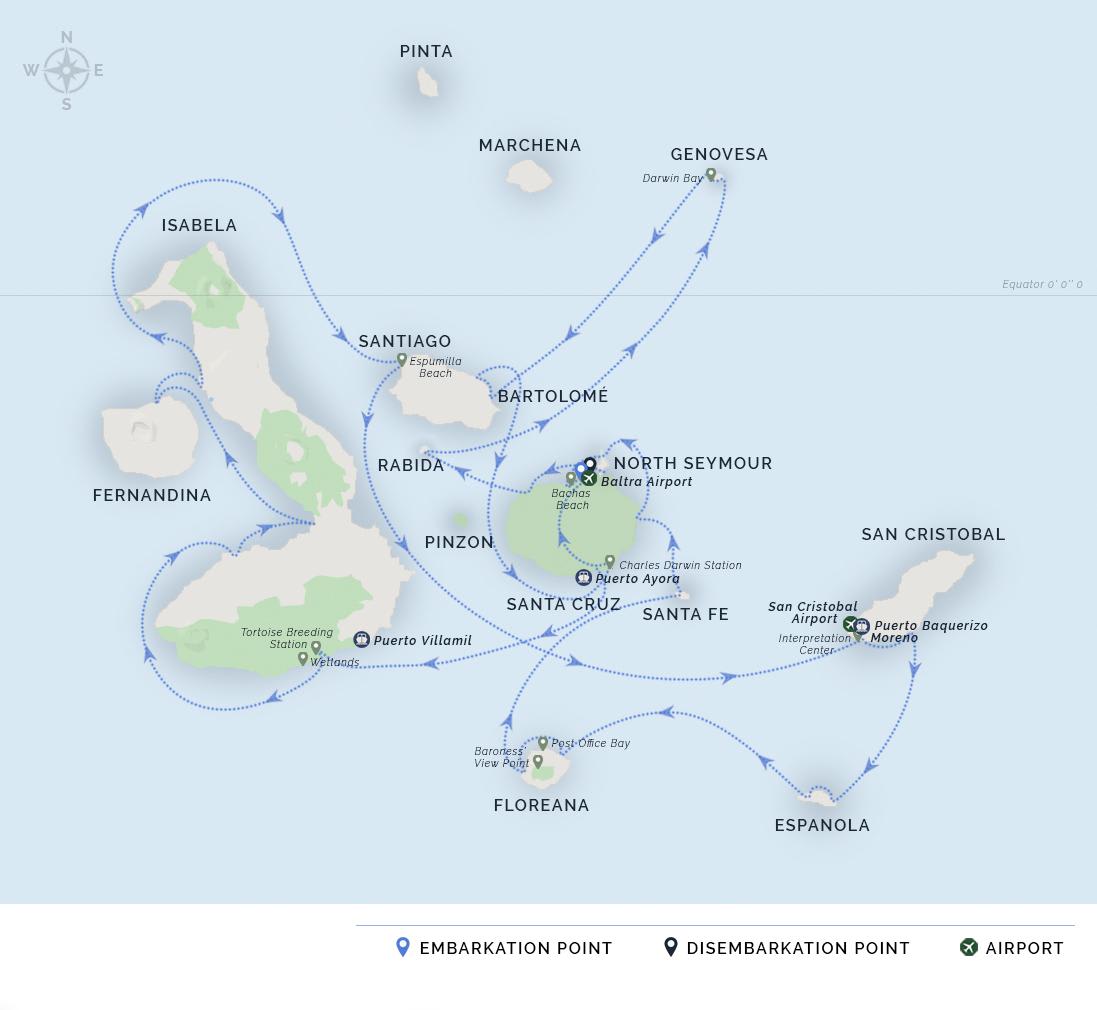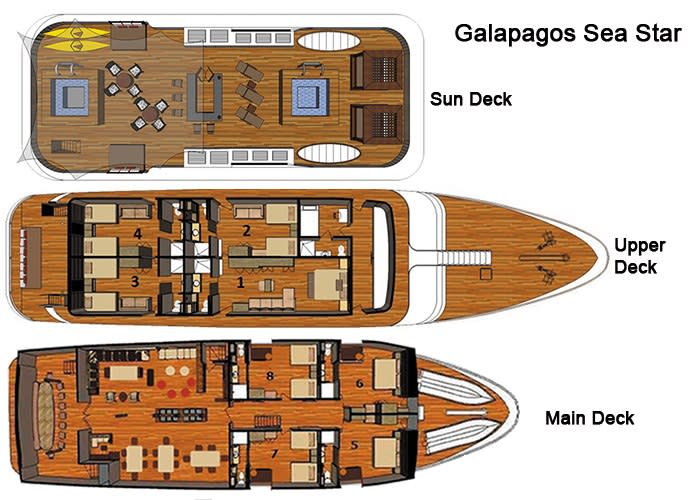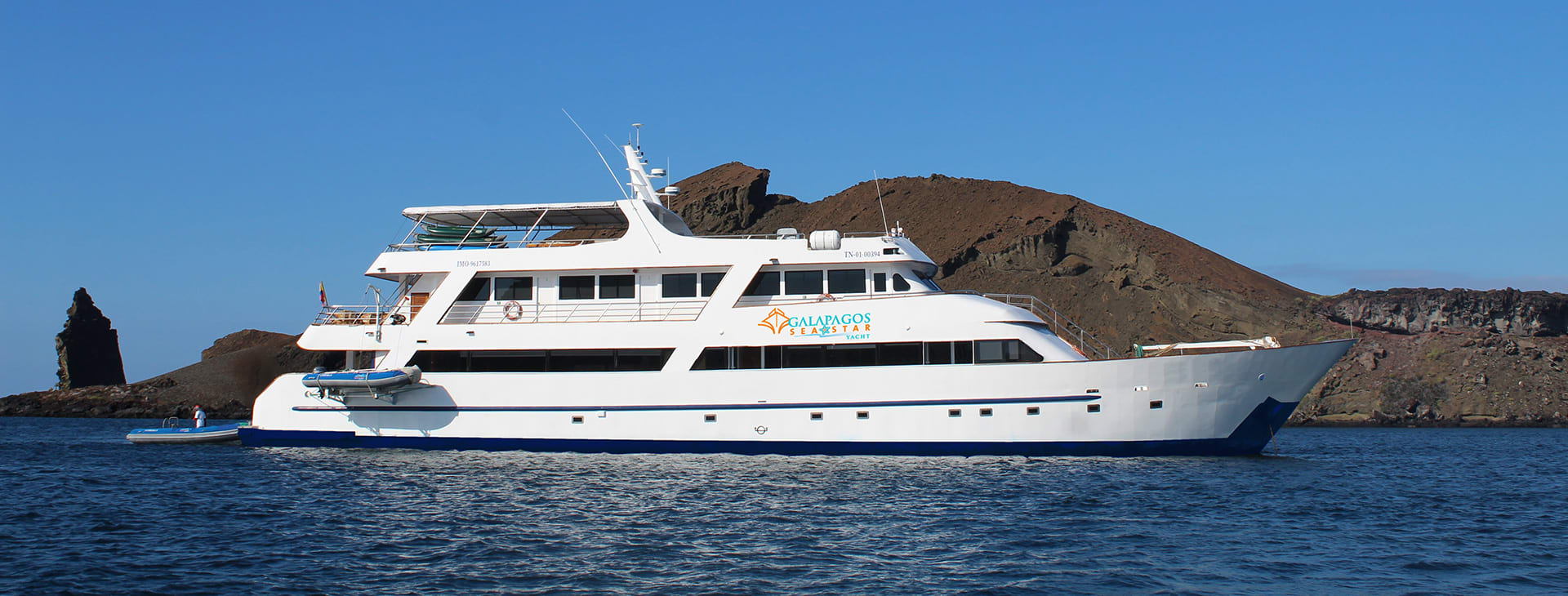
-
Family
Overview
Think up-close-and-personal wildlife exploration means sacrificing comfort? The Sea Star yacht proves that contemporary style, luxury, and privacy go hand-in-hand with Galapagos cruising. This 137-foot yacht invites 16 passengers to indulge in upscale amenities, spacious interiors, and ample outdoor spaces while enjoying itineraries of four to 10 nights.
Life Aboard The Sea Star Yacht
During your time on the Sea Star yacht, you may call one of the eight contemporary suites home, from a choice of three categories. There are three Galapagos and four Balcony Suites, all 270-square-foot in size, with the Galapagos Suites being located on the Upper Deck and having the added benefit of being interconnectable, and the Balcony Suites being located on the Main Deck and offering personal balcony areas. For that a bit of extra luxury, opt for the larger 375- square-foot Sea Star Suite on the Upper Deck.
As lovely as the suites are, you will instantly be drawn to the ship’s social areas, including the Sun Deck. There, sun lovers can laze on lounge chairs or soak in a Jacuzzi. Head to the shaded end of the Sun Deck, with an additional Jacuzzi, for some fun away from the sun. Parents and children alike will appreciate the play zone, which is available on family departures. To add to the fun, snorkeling equipment, and kayaks are available for your use. All this excitement is sure to work up an appetite, and the ship’s chef aims to please with local and international dishes served in the indoor dining area.
Excursions from your Sea Star Cruise Galapagos
Whether you are looking for a short cruise highlighting the most popular sites or a deep dive into all the Galapagos Islands have to offer, the Sea Star has an itinerary to suit. With cruises ranging from four to 10 nights, you can see as much as you please. The shortest 4-night cruises, which sail from Sunday to Thursday, feature a stop at Darwin’s Bay, where bird watchers will delight in the opportunity to see red footed-boobies and lava gulls. The most intense 10-night Thursday to Sunday cruises stop at the bulk of the islands in the region and offer a chance to observe sharks in the crystal clear waters off Gardner Bay at Española Island and to snorkel with the local sea lion population. Each of the six itineraries offers ample dingy rides, swimming, hiking, and unique wildlife encounters.
An award-winning cruise aboard the Sea Star Yacht
The Sea Star was honored by the World Travel Awards with the title of “South America’s Best Leading Boutique Cruise” for three straight years, thanks to high standards for quality and the dedication of the ship’s crew. Aboard the Sea Star, you will enjoy warm welcomes, constant innovation, and personalized service from the moment you set foot on the boat.
Whether you are a family hoping to show your little ones the magic of the Galapagos, a wildlife lover, a bird watcher, or a couple seeking new adventures, the Sea Star yacht offers a variety of amenities and options to please any traveler.
Itineraries & Prices
All itineraries are subject to change due to seasonal weather conditions (and resultant variations in river and tributary water levels) affecting accessibility to locations. Thus navigation routes, times and excursions may need to be modified at the cruise captain’s or your guide's discretion.
Embarkation
AM: Upon arrival at Baltra Airport, visitors must go through an inspection to verify that no foreign plants or animals are being introduced to the islands. An entrance fee of $100 (unless it has been prepaid) must be paid to the Galapagos National Park to conserve the islands. A representative of our M/Y Galápagos Se Star Journey, will meet you right outside, help collect your luggage, and escort your bus ride to Puerto Ayora Village.
PM: The visitor site at Dragon Hill has been opened for visits since 1993. This site is located in northwestern Santa Cruz Island and consists of a trail that leads to a hyper-saline lagoon behind the beach, frequented by flamingos, pintail ducks, and other species of birds. This site has been re-populated with land iguanas from Seymour, Isabela, and Santa Cruz islands. There is a short walk to the Hill, which offers a beautiful view of the bay.
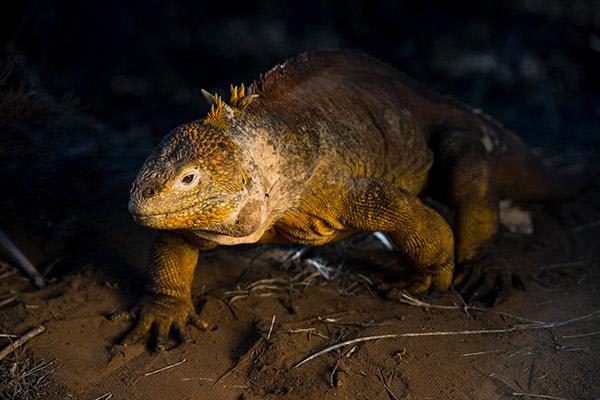
Black Turtle Cove & Chinese Hat Islet
AM: This little cove is located on the northern side of Santa Cruz island, this is a red mangrove lagoon very calm and quiet which made an ideal place as a nursery for many sharks and rays. Its crystal waters allow you to observe large groups of white-tip reef, black-tipped reef and hammerheads sharks, schools of golden rays, and spotted eagle rays. There are no landing sites so the visit is done by panga or kayak. Sea turtles are frequently seen and sometimes they are seen mating in the mangrove-lined waters. Pelicans and Herons are also seen in this area.
PM: This is a small islet (1 sq km) located just to the southeastern tip of Santiago Island. It is a recent volcanic cone, shaped like a Chinese hat when seen from the north side. On the west lava formations, it can be seen, formed under the sea and raised upward, this is why coral heads are found on the lava. This is an excellent visit for the interpretation of geological features such as lava tubes and lava flows. The landscape is covered by sea lions colonies, marine iguanas, and Galapagos penguins.
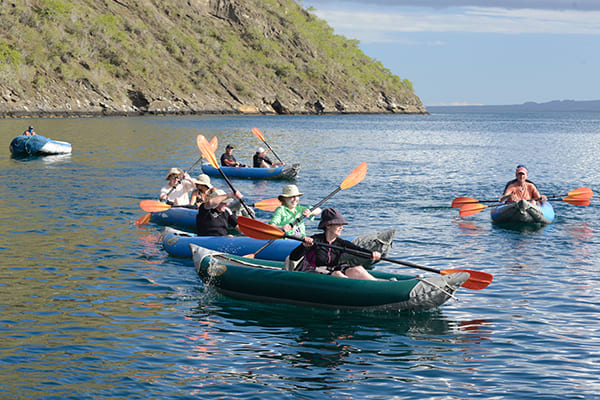
El Barranco & Darwin Bay
AM: The visitor site of El Barranco is located in the southern part of Darwin Bay from Genovesa Island. The trail is on volcanic rock, consists of 1.5 km, and can be done in about 2 hours. The youngest area of the island, from a geological point of view, lies in this area. The cliff is located in the south, is composed of very fragile lava. The natural erosion in these lava flows has become the ideal place for nesting Storm Petrels. You can see two species of petrels that nest in cavities and holes in the lava. One of its main predators is the short-eared owl. The red-footed booby nests only in the outer islands of the archipelago, Punta Pitt, Gardner (Floreana), Wolf, Darwin, and Genovesa. Also present on this island is the masked booby. During the “panga rides” along the cliffs, fur sea lions and several species of seabirds can be seen.
PM: This bay has its origin when the crater of this island collapsed below sea level. The wet landing is on a beautiful white coral sandy beach. This is a favorite island for birdwatchers that allow the following species to be seen: red footed-booby, masked boobies, wandering tattlers, lava gulls, whimbrels, yellow-crowned, and black-crowned lava herons, and yellow warblers. Continuing on the trail, visitors climb gradually to the edge of the cliff seeing Red-Foots nesting in the Mangrove trees below. Bird watching includes sightings of sharp-beaked finches, large cactus and ground finches, Galapagos doves, and swallow-tailed gulls. Reaching the end of the trail, at the cliff's edge, an incredible view of the island and the many birds living there can be observed.
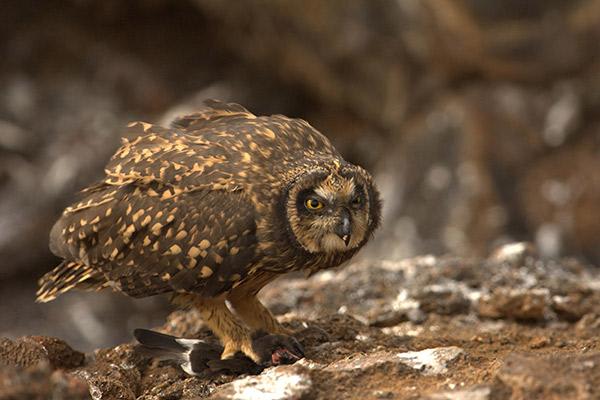
Bartolome & Sullivan Bay
AM: Bartolome Island is situated across Sullivan Bay. It has an altitude of 114 meters, from where we can observe one of the most beautiful sceneries of the Galapagos Islands such as Volcanic cones, lunar-like craters, lava fields, and the famous Toba formed pinnacle eroded by the sea. There is very little vegetation on this island. It has two breathtaking beaches where marine turtles exist and at the base of the pinnacle, as well as a very small colony of Galapagos penguins.
PM: Santiago, also called James, or San Salvador Island is located in the west-central part of the Galapagos archipelago. It is the fourth largest island in the archipelago (following Isabela, Fernandina, and Santa Cruz). Along with some of the large western volcanoes of Isabela and Fernandina, Santiago is also volcanically active, with many young flows and cones to be seen, particularly along the south, west, and east coasts. These may even be seen from the summit of Darwin Volcano and from space. Several historic eruptions have been reported over the last 2 centuries. Santiago consists of two coalesced volcanoes: a typical shield volcano on the northwest end and a low, linear fissure volcano on the southeast end.
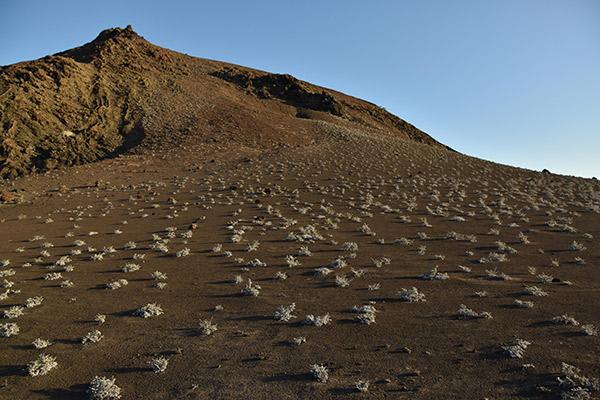
Disembarkation
AM: The trail to the highlands leaves from Bellavista and passes through the agricultural zone, near the National Park boundary, the Miconia Zone, and then goes to the Fern and Sedge zone. With clear weather, this area affords beautiful scenes of rolling hills and extinct. volcanic cones covered with grass and lush greenery all year round.
After the morning excursion, you will be taken to the airport for your flight to the mainland. Baltra airport.
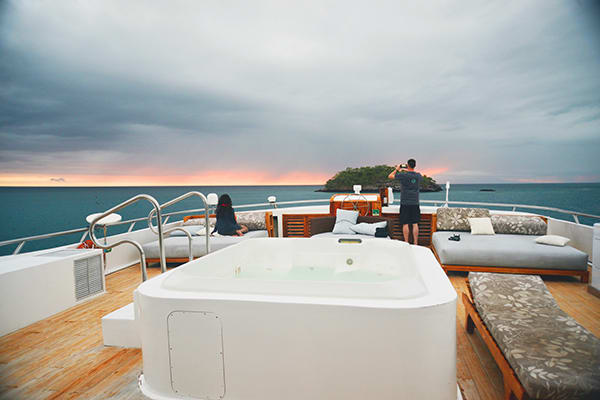
Embarkation
AM: Upon arrival at San Cristobal airport, visitors must go through an inspection to verify that no foreign plants or animals are being introduced to the islands. An entrance fee of $100 (unless it has been prepaid) must be paid to the Galapagos National Park to conserve the islands. A representative of our M/Y Galápagos Se Star Journey, will meet you right outside, help collect your luggage, and escort your bus ride to the harbor.
PM: In the afternoon, you will visit Puerto Chino. It is rife with huge cactus over the trail like trees. Once you get on the beach, you will enjoy its surroundings with its wildlife. Sea lions share the beach with people so it's common to see the puppies playing and swimming. Enjoy the deep blue waters with the waves and tide, occasionally there is wildlife to see, especially tortoises.
After, you will visit the Breeding Center Jacinto Gordillo, also known as the “Galapaguera” which is a good place to observe Galapagos tortoises in their natural habitat. San Cristobal island has endemic species such as the Mockingbird Nesomimus melanotis, lava lizard, Chatham Leaf-toed Gecko, and the tortoises. All of these species can be observed in this place, the beach is really big and it works as a nesting zone for marine tortoises.
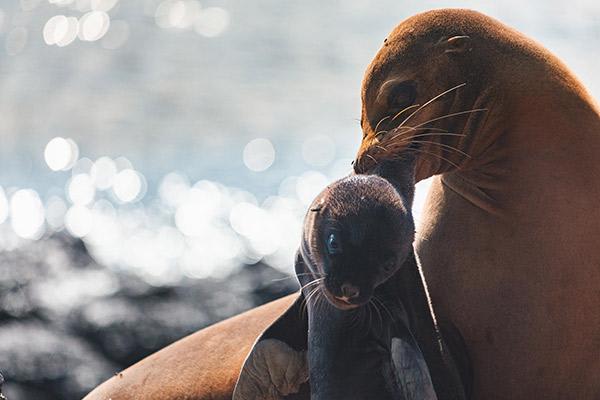
Gardner Bay & Punta Suarez
AM: Located on the north-eastern coast of Hood, Gardner Bay provides an excellent beach for relaxing, swimming, snorkeling, kayaking, and the opportunity to observe sea lions. Here we can also observe sharks in the crystal clear ocean waters.
PM: This rocky land spot sustains one of the most impressive and varied colonies of sea birds in the Galapagos. Along with its southern shore, high cliffs rise from the sea affording the visitor spectacular views of soaring birds and of the blow whole where water spouts up to 50-75 feet into the air according to the intensity of the surf.
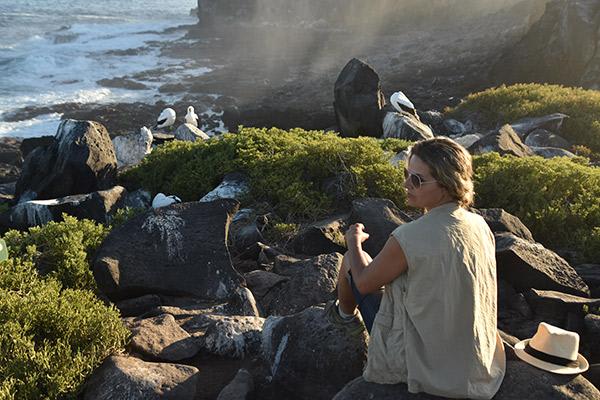
Punta Cormorant, Post Office Bay & Baroness Bay
AM: This site offers probably the best flamingo lagoon in the Galapagos; it is also one of the largest in the islands. There are two tuff lava cones between it, so, the area gets a special atmosphere. There are various species of shorebirds to observe besides flamingos; the most frequent are common stilts, white-checked pintail ducks, and, likewise other migratory birds. It is very interesting to see the two distinct beaches: “The Green Beach” (due to its high percentage of olivine crystals in the sand) and the “Flour Sand Beach” which is made up of coral.
PM: Historically, this site is the location of a wooden barrel placed in the 18th century by the crew of a whaling ship. The mariners, as well as tourists, used it as a post office. The idea is to carry letters or postcards to their destination by hand. At the same time, this site was the landing area for some of the first colonists.
We will continue to the north of the island and will visit Baroness Bay, where we will have the opportunity to Kayak and explore the inlets where seabird nesting sites and sea lion colonies can be found. It is said that Baroness Eloisa von Wagner loved this place and spent several hours watching the horizon. It is a beautiful bay that allows you to breathe in the coastal and volcanic scenery. You will enjoy amazing views from the Sea Star sundeck covering the scenery from Enderby islet to Post office bay, Cerro Pajas, the pool of flamingos, and wide forest of Palo Santo.

Santa Fe & Plazas
AM: Santa Fe is in the southeastern part of the Galapagos. This island was formed from an uplift instead of a volcanic origin, this is why is mostly flat. Some theories assure this could be the oldest island in the Archipelago. Santa Fe is the home of several endemic species like the Galapagos Hawk, Galapagos snake, Galapagos mockingbird, rice rats, and one of the two species of lands Iguanas of the islands. After disembarkation in the beautiful and clear waters, you will be in contact with one of the many sea lion colonies. You can see many salt bushes along the trail as well giant prickly pear cactus, gigantism is a characteristic of oceanic islands. There are great possibilities of snorkeling with playful sea lions and tropical fishes.
PM: Plazas is at the east of Santa Cruz Island and forms part of two islands known as Islas Plazas. Despite its small size, some of the most interesting and outstanding species of the Galapagos are found here. The Plaza's land iguanas are smaller than their relatives found on other islands. Throughout the island are several hybrid iguanas, a result of crossing a male marine iguana and a female land iguana, they are unique, recognizable at first glance by their black/gray color, with a land iguana’s crest, but face and tail of the marine iguana. The big population of iguanas is due to the presence of tunas, their favorite food. You can see swallow Tailed Gulls nesting along the cliffs with other sea birds as Audubon shearwaters, red-billed tropicbirds, frigate birds, and brown pelicans.
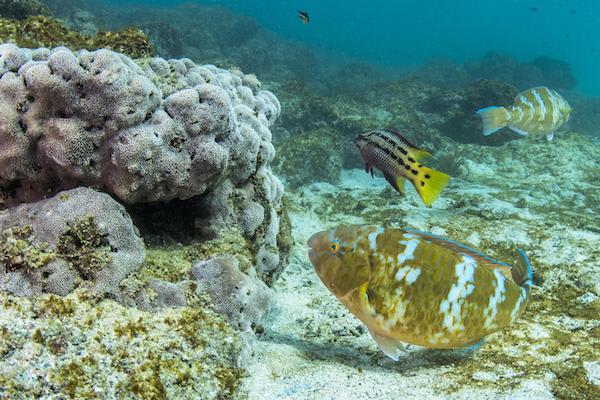
North Seymour & Bachas Beach
AM: Seymour is an uplifted (as opposed to volcanic) island and so is generally flat and strewn with boulders. There are good nesting sites here for a large population of magnificent frigate birds. Blue-footed boobies perform their courtship dance in the more open areas and swallow-tailed gulls perch on the cliff edges. Despite the tremendous surf that can pound the outer shore, sea lions haul out onto the beach, and that you can find surfing.
Watch your step, as the boobies don’t worry much about where they nest, and you might just step on one. The trees are dotted with male frigate birds trying to attract the attention of the ladies by inflating their bright red skin flaps. They sometimes fly in the air to call more attention to themselves. There’s a circular path that takes you through the island to a beautiful, rocky shore where the waves crash a silvery blue.
PM: These two small beaches are in the West of Turtle Cove. Their sand is made of decomposed coral, which makes it white and soft, making it a favorite nesting site for sea turtles. Behind one of the beaches, there is a small brackish water lagoon, where occasionally is possible to observe flamingos and other coastal birds, such as black-necked stilts and whimbrels. The other beach is longer, but it has two old barges abandoned during the Second World War when the USA used Baltra Island as a strategic point to protect the Panama Channel.
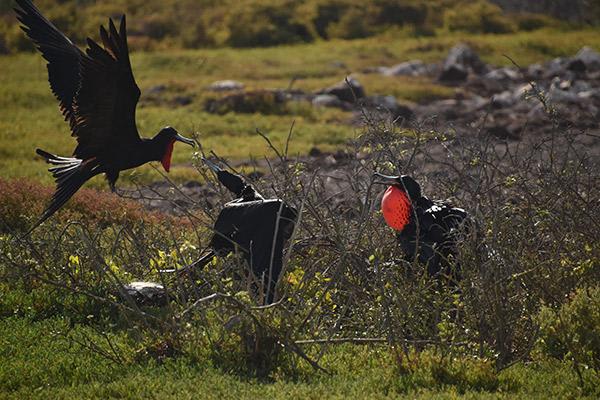
Disembarkation
AM: Mosquera Islet is located between Baltra and North Seymour Islands and it was formed by geological uplift. In its narrowest width reaches 160 meters approximately. This islet has one of the largest populations of sea lions. Visitors can also observe several species of shorebirds, reports of dolphins and orcas if you are lucky.
After this activity, you will go to the Baltra airport for your flight back to the mainland.
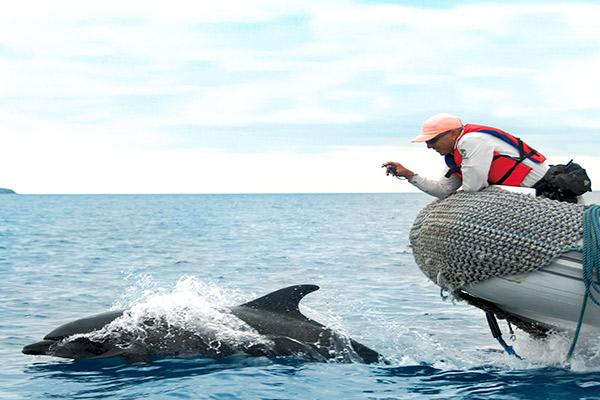
Embarkation
AM: Upon arrival at Baltra Airport, travelers pass through an airport inspection point to insure that no foreign plants or animals are introduced to the islands, as well as to pay the park entrance fee of $100 (unless it has been prepaid). A representative of our M/Y Galápagos Sea Star Journey will meet you, help you collect your luggage, and escort you on a bus ride to the Itabaca Channel and then transfer to Puerto Ayora.
PM: Although the great majority of Galapagos visitors come here to observe and appreciate natural wonders, they also learn how people are working to protect and conserve the islands. The main attractions are the National Park information center, the Van Staelens Exhibition Hall, the Breeding, and Rearing Center for young tortoises and adult Galapagos tortoises in captivity.
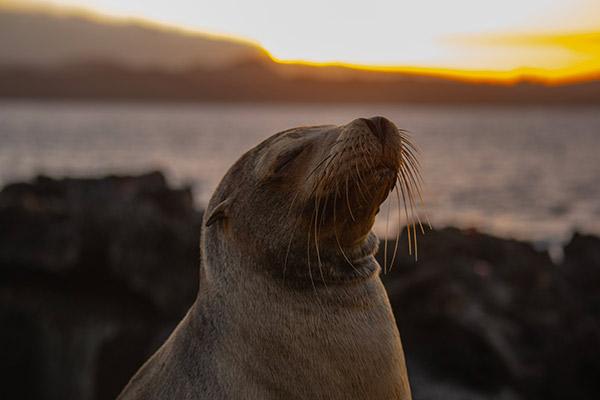
White-tipped Reef Shark Canal & Sierra Negra Volcano
AM: A delightful place reached by a nice zodiac ride. “Tintoreras” are small islands in front of the Puerto Villamil coast. There is Heron lava on the lookout on mangrove branches, and Galapagos penguins and sea lions often pop out onshore. White-tipped reef sharks are fairly common in the archipelago. Their name in Spanish is Tintorera, as well as the name of this site, it is because you can always find them here resting in the shallow waters.
PM: Isabela Island is the largest and one of the youngest islands in the Galapagos archipelago. We land in Puerto Villamil, which has the second smallest population in Galapagos with approximately 3000 habs. We head up to the highlands from Puerto Villamil to the Sierra Negra slope, and later we will do some hiking on uneven terrain until we arrive at the Sierra Negra volcano rim. Sierra Negra is the second widest crater in the world. From this viewpoint, you have fantastic sights to the 6 x 5 -mile-wide crater, the rest of the volcanoes, and Perry Isthmus, a 12 Km wide lava field. In fact, from here we can hike to Chico Volcano to watch the striking lava formations, examples of the geological occurrences that have created the Galapagos Islands.
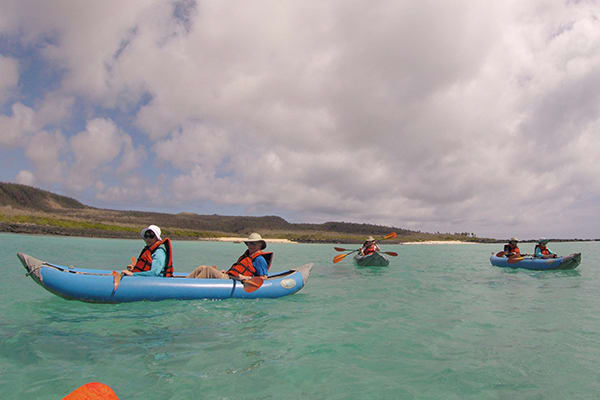
Punta Moreno & Elizabeth Bay
AM: Punta Moreno is located on the north coast of Isabela Island between the volcano Sierra Negra and Cerro Azul volcano. The trail runs along with a lava flow Pahohoe (solidified lava in the form of corrugated or an accordion) into a complex of coastal lagoons, its main attraction are several species of birds that can be found around these lakes and mangroves
PM: This is a marine visitor site, so, the excursion is carried out in a zodiac and so there is no landing point. Your zodiac ride starts with a visit to Mariela's islets because there is the largest and most important penguin colony in the Galapagos Islands. The excursion continues into the cove that is surrounded by red mangroves where you can admire their red roots and green leaves. It is here that you can observe sea turtles, flightless cormorants, spotted eagle rays, golden rays, brown pelicans, and sea lions. Frequently visitors have been able to see Galapagos Hawks soaring overhead whilst schools of Pompano as well as Dorado fish swim below.
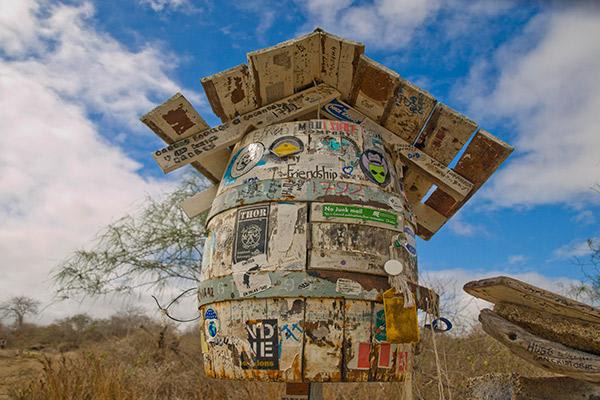
Punta Espinoza & Tagus Cove
AM: Fernandina is the third largest island in the archipelago and it has a single visitor site: Punta Espinoza located at the northeastern tip of the island. However, just across Tagus Cove, you can see some of the unique species of Galapagos. Marine iguanas conglomerate in larger groups than on any other island. They bask around in the sand, swim near the shore, and sometimes block the way at the landing dock. Among the unique species found here, is the Flightless Cormorant. A bird that due to the lack of predators had to adjust its way of survival and improve its skills of finding food in the ocean. Their wings, tails, and feet progressively adapted for swimming. To see these birds is to witness evolution happening right in front of you. Stay within 2m of the cormorants and penguins.
PM: Tagus Cove, a tour along the cliffs in a zodiac will give the visitors a good chance to see the Galapagos penguin, the flightless cormorant as well as other sea birds. From the landing dock, it is about a 30-minute hike along the trail up to the top of the cliff. Here you can see Darwin Lake, an uplifted ultra saline lake saltier than the sea. You can also see several volcanoes from this location. Look carefully at the graffiti on the surrounding cliffs of the cove, it has been written by pirates, whalers, and buccaneers in past centuries.
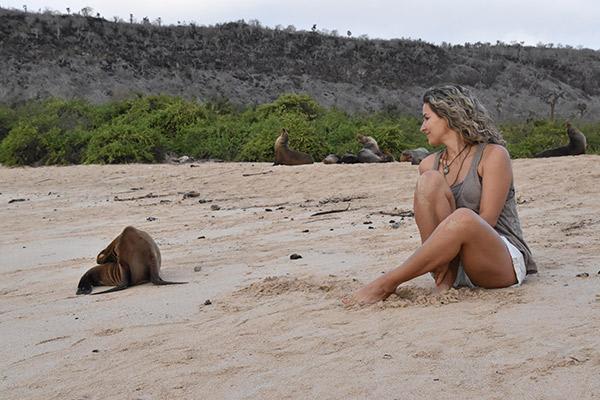
Espumilla Beach & Puerto Egas
AM: Espumilla Beach is located on the northern coast of Santiago Island in James Bay. During the last presence of the El Niño phenomenon, one of the two lagoons in this site underwent a process of sedimentation. Thus causing the disappearance of a representative colony of flamingos. The main attractions are the Palo Santo forest and the marvelous landscape. The beach is an important site for nesting marine turtles.
PM: Its black beach is located on the west side of the island and is the main attraction of the island. Their volcanic tuff deposits have favored the formation of this special black sand beach.
This site is called Puerto Egas, because there was an attempt of the company of Hector Egas, to start the exploitation of salt, which failed. After all, the price of salt in the continent was very cheap and did not justify its exploitation in Galapagos. Although, they abandoned the project and left the infrastructure.
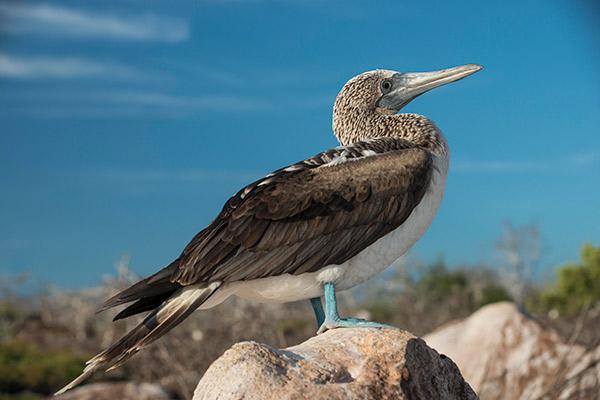
Disembarkation
AM: This little island is reached at approx 1 hour by panga from Port Baquerizo Moreno, the capital of the Island. The trail will lead across a dry vegetation zone, the substrate of volcanic rocks and sandy areas. There is a small population of blue-footed boobies and frigate birds, which nest in this site. At the beach, you will see a large colony of sea lions. It is common to see shorebirds.
After your visit to Isla Lobos, transfer to the airport in San Cristobal and Flight back to Quito or Guayaquil.
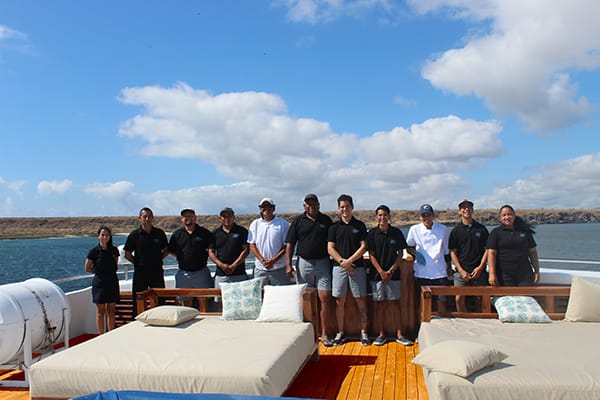
Embarkation
AM: Upon arrival at San Cristobal airport, visitors must go through an inspection in order to verify that no foreign plants or animals are being introduced to the islands. An entrance fee of $100 (unless it has been prepaid) must be paid to the Galapagos National Park in order to conserve the islands. A representative of our M/Y Galápagos Sea Star Journey, will meet you right outside and, help collect your luggage and escort your bus ride to the harbor.
PM: In the afternoon, you will visit Puerto Chino. It is rife with huge cactus aside from the trail-like trees. Once you get on the beach, you will enjoy its surroundings with its wildlife. Sea lions share the beach with people so it's common to see the puppies playing and swimming. Enjoy the deep blue waters with the waves and tide, occasionally there is wildlife to see, especially tortoises.
After some beach time, you will visit the Breeding Center Jacinto Gordillo, also known as the “Galapaguera” which is a good place to observe Galapagos tortoises in their natural habitat. San Cristobal island has endemic species such as the Mockingbird, lava lizard, Chatham Leaf-toed Gecko, and the giant tortoises. All of these species can be observed in this place, the beach is really big and it serves as a nesting zone for marine tortoises.
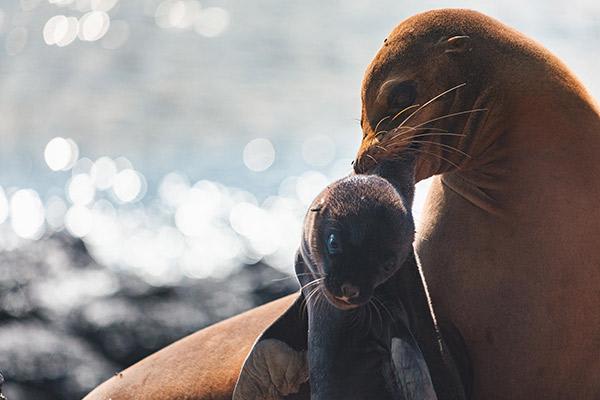
Gardner Bay & Punta Suarez
AM: Located on the north-eastern coast of Hood, Gardner Bay provides an excellent beach for relaxing, swimming, snorkeling, kayaking, and the opportunity to observe sea lions. Here we can also observe sharks in the crystal clear ocean waters.
PM: This rocky land spot sustains one of the most impressive and varied colonies of sea birds in the Galapagos. Along its southern shore, high cliffs rise up from the sea affording the visitor spectacular views of soaring birds and of the blow whole where water spouts up to 50-75 feet into the air according to the intensity of the surf.
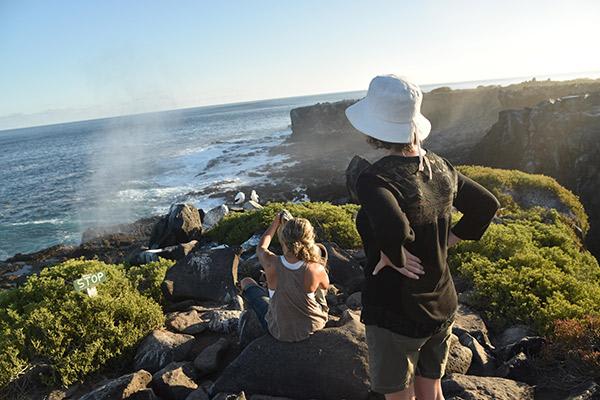
Punta Cormorant, Post Office Bay & Baroness Bay
AM: This site offers probably the best flamingo lagoon in the Galapagos; it is also one of the largest in the islands. There are two tuff lava cones between it, so, the area gets a special atmosphere. There are various species of shorebirds to observe besides flamingos; the most frequent are common stilts, white-checked pintail ducks, and, likewise other migratory birds. It is very interesting to see the two distinct beaches: “The Green Beach” (due to its high percentage of olivine crystals in the sand) and the “Flour Sand Beach” which is made up of coral.
PM: Historically, this site is the location of a wooden barrel placed in the 18th century by the crew of a whaling ship. The mariners, as well as tourists, used it as a post office. The idea is to carry letters or postcards to their destination by hand. At the same time, this site was the landing area for some of the first colonists.
We will continue to the north of the island and will visit Baroness Bay, where we will have the opportunity to Kayak and explore the inlets where seabird nesting sites and sea lion colonies can be found. It is said that Baroness Eloisa von Wagner loved this place and spent several hours watching the horizon. It is a beautiful bay that allows you to breathe in the coastal and volcanic scenery. You will enjoy amazing views from the Sea Star sundeck covering the scenery from Enderby islet to Post office bay, Cerro Pajas, the pool of flamingos, and wide forest of Palo Santo.

Santa Fe & Plazas
AM: Santa Fe is in the southeastern part of the Galapagos. This island was formed from an uplift instead of a volcanic origin, this is why is mostly flat. Some theories assure this could be the oldest island in the Archipelago. Santa Fe is the home of several endemic species like the Galapagos Hawk, Galapagos snake, Galapagos mockingbird, rice rats, and one of the two species of lands Iguanas of the islands. After disembarkation in the beautiful and clear waters, you will be in contact with one of the many sea lion colonies. You can see many salt bushes along the trail as well giant prickly pear cactus, gigantism is a characteristic of oceanic islands. There are great possibilities of snorkeling with playful sea lions and tropical fishes.
PM: Plazas is at the east of Santa Cruz Island and forms part of two islands known as Islas Plazas. Despite its small size, some of the most interesting and outstanding species of the Galapagos are found here. The Plaza's land iguanas are smaller than their relatives found on other islands. Throughout the island are several hybrid iguanas, a result of crossing a male marine iguana and a female land iguana, they are unique, recognizable at first glance by their black/gray color, with a land iguana’s crest, but face and tail of the marine iguana. The big population of iguanas is due to the presence of tunas, their favorite food. You can see swallow Tailed Gulls nesting along the cliffs with other sea birds as Audubon shearwaters, red-billed tropicbirds, frigate birds, and brown pelicans.
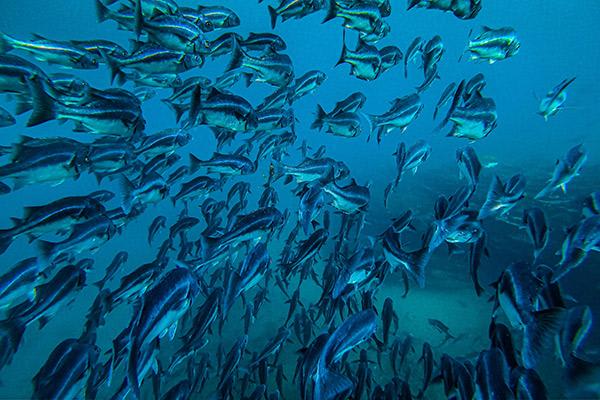
North Seymour & Bachas Beach
AM: Seymour is an uplifted (as opposed to volcanic) island and so is generally flat and strewn with boulders. There are good nesting sites here for a large population of magnificent frigate birds. Blue-footed boobies perform their courtship dance in the more open areas and swallow-tailed gulls perch on the cliff edges. Despite the tremendous surf that can pound the outer shore, sea lions haul out onto the beach, and that you can find surfing.
Watch your step, as the boobies don’t worry much about where they nest, and you might just step on one. The trees are dotted with male frigate birds trying to attract the attention of the ladies by inflating their bright red skin flaps. They sometimes fly in the air to call more attention to themselves. There’s a circular path that takes you through the island to a beautiful, rocky shore where the waves crash a silvery blue.
PM: These two small beaches are in the West of Turtle Cove. Their sand is made of decomposed coral, which makes it white and soft, making it a favorite nesting site for sea turtles. Behind one of the beaches, there is a small brackish water lagoon, where occasionally is possible to observe flamingos and other coastal birds, such as black-necked stilts and whimbrels. The other beach is longer, but it has two old barges abandoned during the Second World War when the USA used Baltra Island as a strategic point to protect the Panama Channel.

Mosquera Islet & Dragon Hill
AM: Mosquera Islet is located between Baltra and North Seymour Islands and it was formed by a geological uplift, in its narrowest width reaches 160 meters approximately. This islet has one of the largest populations of sea lions, visitors can also observe several species of shorebirds. If you are lucky you can also see dolphins and orcas around this islet.
PM: The visitor site at Dragon Hill has been open for visits since 1993. This site is located in northwestern Santa Cruz Island. It consists of a trail that leads to a hyper-saline lagoon behind the beach. Here you can see flamingos, pintail ducks, and other species of birds. This site has been re-populated with land iguanas from Seymour, Isabela, and Santa Cruz islands. There is a short walk to the Hill, which offers a beautiful view of the bay.
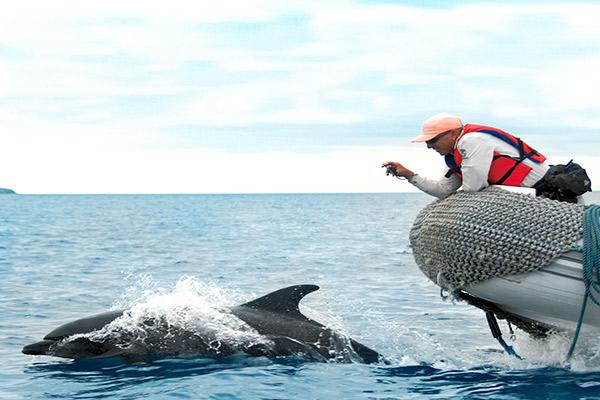
Black Turtle Cove & Chinese Hat Islet
AM: This little cove is located on the northern side of Santa Cruz island, this is a red mangrove lagoon very calm and quiet which made an ideal place as a nursery for many sharks and rays. Its crystal waters allow you to observe large groups of white-tip reef, black-tipped reef and hammerheads sharks, schools of golden rays, and spotted eagle rays. There are no landing sites so the visit is done by panga or kayak. Sea turtles are frequently seen and sometimes they are seen mating in the mangrove-lined waters. Pelicans and Herons are also seen in this area.
PM: This is a small islet (1 sq km) located just o the southeastern tip of Santiago Island. It is a recent volcanic cone, shaped like a Chinese hat when seen from the north side. On the west lava formations, it can be seen, formed under the sea and raised upward, this is why coral heads are found on the lava. This is an excellent visit for the interpretation of geological features such as lava tubes and lava flows. The landscape is covered by sea lions colonies, marine iguanas, and Galapagos penguins.
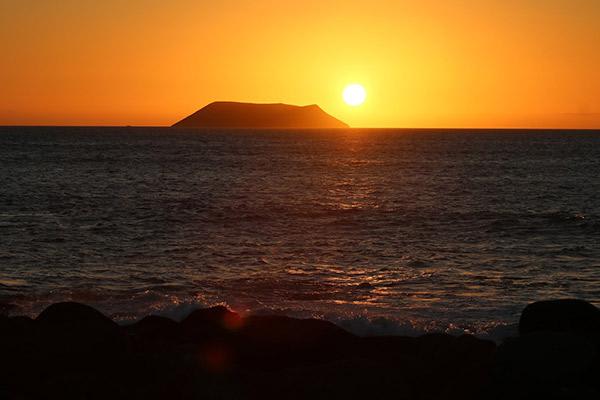
El Barranco & Darwin Bay
AM: The visitor site of El Barranco is located in the southern part of Darwin Bay from Genovesa Island. The trail is on volcanic rock, consists of 1.5 km, and can be done in about 2 hours. The youngest area of the island, from a geological point of view, lies in this area. The cliff is located in the south, is composed of very fragile lava. The natural erosion in these lava flows has become the ideal place for nesting Storm Petrels. You can see two species of petrels that nest in cavities and holes in the lava. One of its main predators is the short-eared owl. The red-footed booby nests only in the outer islands of the archipelago, Punta Pitt, Gardner (Floreana), Wolf, Darwin, and Genovesa. Also present on this island is the masked booby. During the “panga rides” along the cliffs, fur sea lions and several species of seabirds can be seen.
PM: This bay has its origin when the crater of this island collapsed below sea level. The wet landing is on a beautiful white coral sandy beach. This is a favorite island for birdwatchers that allow the following species to be seen: red footed-booby, masked boobies, wandering tattlers, lava gulls, whimbrels, yellow-crowned, and black-crowned lava herons, and yellow warblers. Continuing on the trail, visitors climb gradually to the edge of the cliff seeing Red-Foots nesting in the Mangrove trees below. Bird watching includes sightings of sharp-beaked finches, large cactus and ground finches, Galapagos doves, and swallow-tailed gulls. Reaching the end of the trail, at the cliff's edge, an incredible view of the island and the many birds living there can be observed.
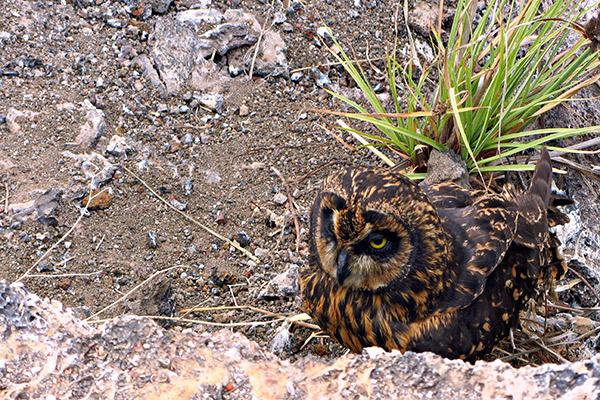
Bartolome & Sullivan Bay
AM: Bartolome Island is situated across Sullivan Bay. It has an altitude of 114 meters, from where we can observe one of the most beautiful sceneries of the Galapagos Islands such as Volcanic cones, lunar-like craters, lava fields, and the famous Toba formed pinnacle eroded by the sea. There is very little vegetation on this island. It has two breathtaking beaches where marine turtles exist and at the base of the pinnacle, as well as a very small colony of Galapagos penguins.
PM: Santiago, also called James, or San Salvador Island is located in the west-central part of the Galapagos archipelago. It is the fourth largest island in the archipelago (following Isabela, Fernandina, and Santa Cruz). Along with some of the large western volcanoes of Isabela and Fernandina, Santiago is also volcanically active, with many young flows and cones to be seen, particularly along the south, west, and east coasts. These may even be seen from the summit of Darwin Volcano and from space. Several historic eruptions have been reported over the last 2 centuries. Santiago consists of two coalesced volcanoes: a typical shield volcano on the northwest end and a low, linear fissure volcano on the southeast end.
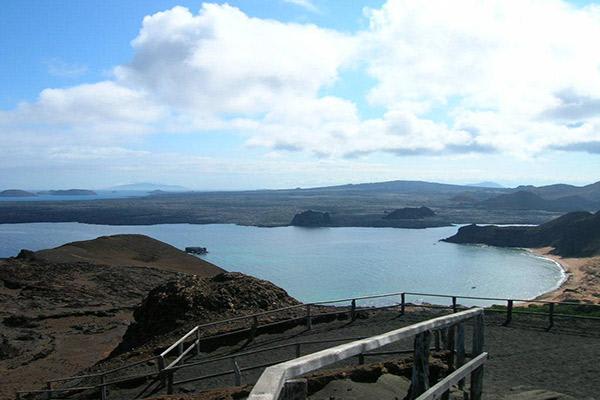
Disembarkation
AM: The trail to the highlands leaves from Bellavista and passes through the agricultural zone, near the National Park boundary, the Miconia Zone, and then goes to the Fern and Sedge zone. With clear weather, this area affords beautiful scenes of rolling hills and extinct. volcanic cones covered with grass and lush greenery all year round.
After the morning excursion, you will be taken to the airport for your flight to the mainland. Baltra airport.
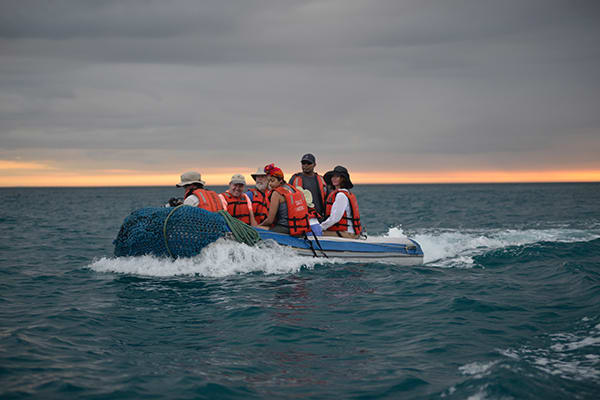
Embarkation
AM: Upon arrival at Baltra Airport, visitors must go through an inspection to verify that no foreign plants or animals are being introduced to the islands. An entrance fee of $100 (unless it has been prepaid) must be paid to the Galapagos National Park to conserve the islands. A representative of our M/Y Galápagos Se Star Journey, will meet you right outside, help collect your luggage, and escort your bus ride to Puerto Ayora Village.
PM: The visitor site at Dragon Hill has been opened for visits since 1993. This site is located in northwestern Santa Cruz Island and consists of a trail that leads to a hyper-saline lagoon behind the beach, frequented by flamingos, pintail ducks, and other species of birds. This site has been re-populated with land iguanas from Seymour, Isabela, and Santa Cruz islands. There is a short walk to the Hill, which offers a beautiful view of the bay.
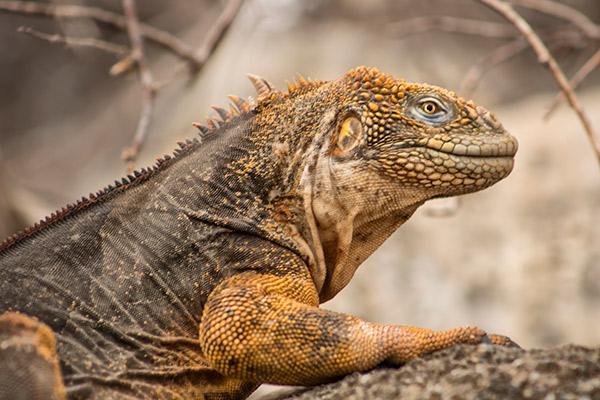
Black Turtle Cove & Chinese Hat Islet
AM: This little cove is located on the northern side of Santa Cruz island, this is a red mangrove lagoon very calm and quiet which made an ideal place as a nursery for many sharks and rays. Its crystal waters allow you to observe large groups of white-tip reef, black-tipped reef and hammerheads sharks, schools of golden rays, and spotted eagle rays. There are no landing sites so the visit is done by panga or kayak. Sea turtles are frequently seen and sometimes they are seen mating in the mangrove-lined waters. Pelicans and Herons are also seen in this area.
PM: This is a small islet (1 sq km) located just o the southeastern tip of Santiago Island. It is a recent volcanic cone, shaped like a Chinese hat when seen from the north side. On the west lava formations, it can be seen, formed under the sea and raised upward, this is why coral heads are found on the lava. This is an excellent visit for the interpretation of geological features such as lava tubes and lava flows. The landscape is covered by sea lions colonies, marine iguanas, and Galapagos penguins.
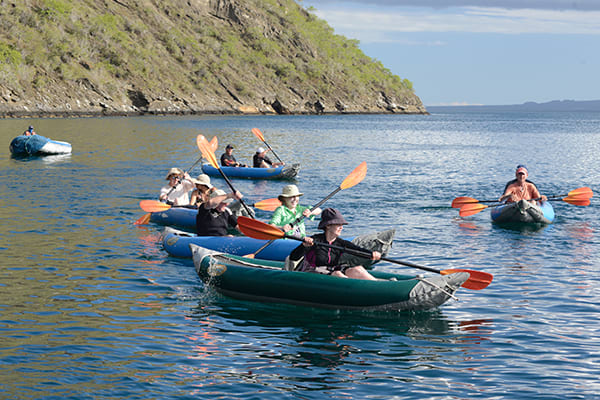
El Barranco & Darwin Bay
AM: The visitor site of El Barranco is located in the southern part of Darwin Bay from Genovesa Island. The trail is on volcanic rock, consists of 1.5 km, and can be done in about 2 hours. The youngest area of the island, from a geological point of view, lies in this area. The cliff is located in the south, is composed of very fragile lava. The natural erosion in these lava flows has become the ideal place for nesting Storm Petrels. You can see two species of petrels that nest in cavities and holes in the lava. One of its main predators is the short-eared owl. The red-footed booby nests only in the outer islands of the archipelago, Punta Pitt, Gardner (Floreana), Wolf, Darwin, and Genovesa. Also present on this island is the masked booby. During the “panga rides” along the cliffs, fur sea lions and several species of seabirds can be seen.
PM: This bay has its origin when the crater of this island collapsed below sea level. The wet landing is on a beautiful white coral sandy beach. This is a favorite island for birdwatchers that allow the following species to be seen: red footed-booby, masked boobies, wandering tattlers, lava gulls, whimbrels, yellow-crowned, and black-crowned lava herons, and yellow warblers. Continuing on the trail, visitors climb gradually to the edge of the cliff seeing Red-Foots nesting in the Mangrove trees below. Bird watching includes sightings of sharp-beaked finches, large cactus and ground finches, Galapagos doves, and swallow-tailed gulls. Reaching the end of the trail, at the cliff's edge, an incredible view of the island and the many birds living there can be observed.
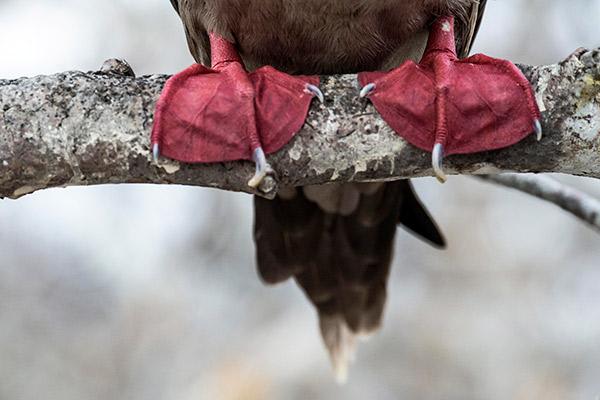
Bartolome & Sullivan Bay
AM: Bartolome Island is situated across Sullivan Bay. It has an altitude of 114 meters, from where we can observe one of the most beautiful sceneries of the Galapagos Islands such as Volcanic cones, lunar-like craters, lava fields, and the famous Toba formed pinnacle eroded by the sea. There is very little vegetation on this island. It has two breathtaking beaches where marine turtles exist and at the base of the pinnacle, as well as a very small colony of Galapagos penguins.
PM: Santiago, also called James, or San Salvador Island is located in the west-central part of the Galapagos archipelago. It is the fourth largest island in the archipelago (following Isabela, Fernandina, and Santa Cruz). Along with some of the large western volcanoes of Isabela and Fernandina, Santiago is also volcanically active, with many young flows and cones to be seen, particularly along the south, west, and east coasts. These may even be seen from the summit of Darwin Volcano and from space. Several historic eruptions have been reported over the last 2 centuries. Santiago consists of two coalesced volcanoes: a typical shield volcano on the northwest end and a low, linear fissure volcano on the southeast end.
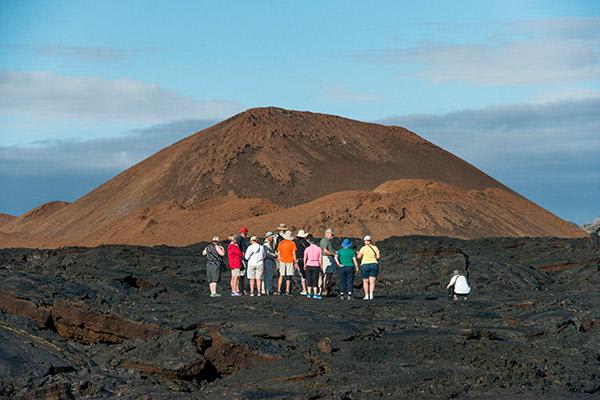
Highlands & Charles Darwin Station
AM: The trail to the highlands leaves from Bellavista and passes through the agricultural zone, near the National Park boundary, the Miconia Zone, and then goes to the Fern and Sedge zone. With clear weather (unpredictable) this area affords beautiful scenes of rolling hills and extinct volcanic cones covered with grass and lush greenery all year round.
PM: Although the great majority of Galapagos visitors come here to observe and appreciate natural wonders. You can also learn about how they work in the protection and conservation of the islands. The main attractions are the National Park information center, the Van Staelens Exhibition Hall, the Breeding, and Rearing Center for young tortoises and adult Galapagos tortoises in captivity.
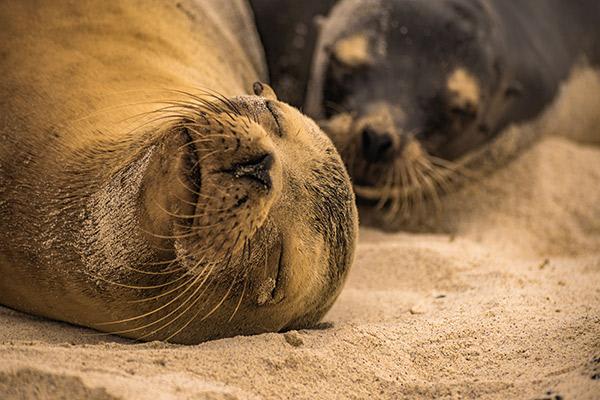
White-tipped Reef Shark Canal & Sierra Negra Volcano
AM: A delightful place reached by a nice zodiac ride. “Tintoreras” are small islands in front of the Puerto Villamil coast. There is Heron lava on the lookout on mangrove branches, and Galapagos penguins and sea lions often pop out onshore. White-tipped reef sharks are fairly common in the archipelago. Their name in Spanish is Tintorera, as well as the name of this site, it is because you can always find them here resting in the shallow waters.
PM: Isabela Island is the largest and one of the youngest islands in the Galapagos archipelago. We land in Puerto Villamil, which has the second smallest population in Galapagos with approximately 3000 habs. We head up to the highlands from Puerto Villamil to the Sierra Negra slope, and later we will do some hiking on uneven terrain until we arrive at the Sierra Negra volcano rim. Sierra Negra is the second widest crater in the world. From this viewpoint, you have fantastic sights to the 6 x 5 -mile-wide crater, the rest of the volcanoes, and Perry Isthmus, a 12 Km wide lava field. In fact, from here we can hike to Chico Volcano to watch the striking lava formations, examples of the geological occurrences that have created the Galapagos Islands.
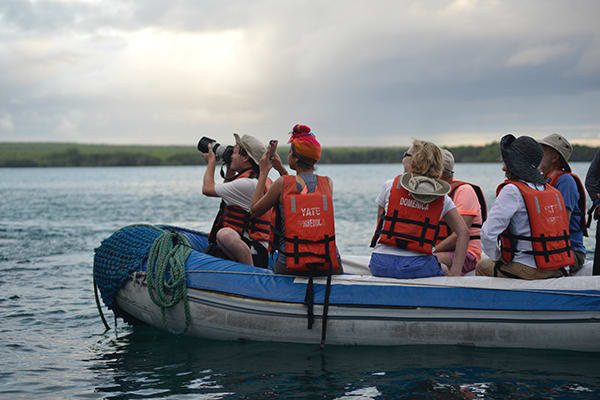
Punta Moreno & Elizabeth Bay
AM: Punta Moreno is located on the north coast of Isabela Island between the volcano Sierra Negra and Cerro Azul volcano. The trail runs along with a lava flow Pahohoe (solidified lava in the form of corrugated or an accordion) into a complex of coastal lagoons, its main attraction are several species of birds that can be found around these lakes and mangroves
PM: This is a marine visitor site, so, the excursion is carried out in a zodiac and so there is no landing point. Your zodiac ride starts with a visit to Mariela's islets because there is the largest and most important penguin colony in the Galapagos Islands. The excursion continues into the cove that is surrounded by red mangroves where you can admire their red roots and green leaves. It is here that you can observe sea turtles, flightless cormorants, spotted eagle rays, golden rays, brown pelicans, and sea lions. Frequently visitors have been able to see Galapagos Hawks soaring overhead whilst schools of Pompano as well as Dorado fish swim below.

Punta Espinoza & Tagus Cove
AM: Fernandina is the third largest island in the archipelago and it has a single visitor site: Punta Espinoza located at the northeastern tip of the island. However, just across Tagus Cove, you can see some of the unique species of Galapagos. Marine iguanas conglomerate in larger groups than on any other island. They bask around in the sand, swim near the shore, and sometimes block the way at the landing dock. Among the unique species found here, is the Flightless Cormorant. A bird that due to the lack of predators had to adjust its way of survival and improve its skills of finding food in the ocean. Their wings, tails, and feet progressively adapted for swimming. To see these birds is to witness evolution happening right in front of you. Stay within 2m of the cormorants and penguins.
PM: Tagus Cove, a tour along the cliffs in a zodiac will give the visitors a good chance to see the Galapagos penguin, the flightless cormorant as well as other sea birds. From the landing dock, it is about a 30-minute hike along the trail up to the top of the cliff. Here you can see Darwin Lake, an uplifted ultra saline lake saltier than the sea. You can also see several volcanoes from this location. Look carefully at the graffiti on the surrounding cliffs of the cove, it has been written by pirates, whalers, and buccaneers in past centuries.
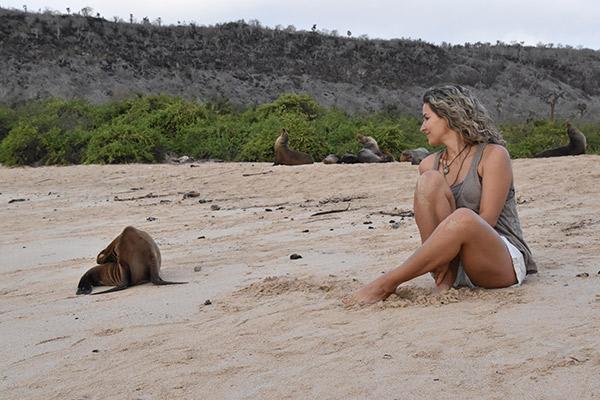
Espumilla Beach & Puerto Egas
AM: Espumilla Beach is located on the northern coast of Santiago Island in James Bay. During the last presence of the El Niño phenomenon, one of the two lagoons in this site underwent a process of sedimentation. Thus causing the disappearance of a representative colony of flamingos. The main attractions are the Palo Santo forest and the marvelous landscape. The beach is an important site for nesting marine turtles.
PM: Its black beach is located on the west side of the island and is the main attraction of the island. Their volcanic tuff deposits have favored the formation of this special black sand beach.
This site is called Puerto Egas, because there was an attempt of the company of Hector Egas, to start the exploitation of salt, which failed. After all, the price of salt in the continent was very cheap and did not justify its exploitation in Galapagos. Although, they abandoned the project and left the infrastructure.
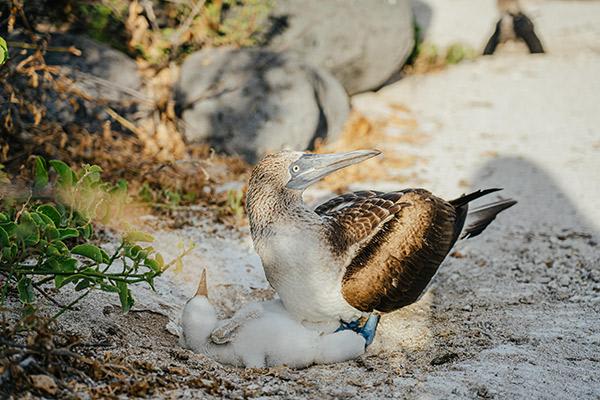
Disembarkation
AM: This little island is reached at approx 1 hour by panga from Port Baquerizo Moreno, the capital of the Island. The trail will lead across a dry vegetation zone, the substrate of volcanic rocks and sandy areas. There is a small population of blue-footed boobies and frigate birds, which nest in this site. At the beach, you will see a large colony of sea lions. It is common to see shorebirds.
After your visit to Isla Lobos, transfer to the airport in San Cristobal and Flight back to Quito or Guayaquil.
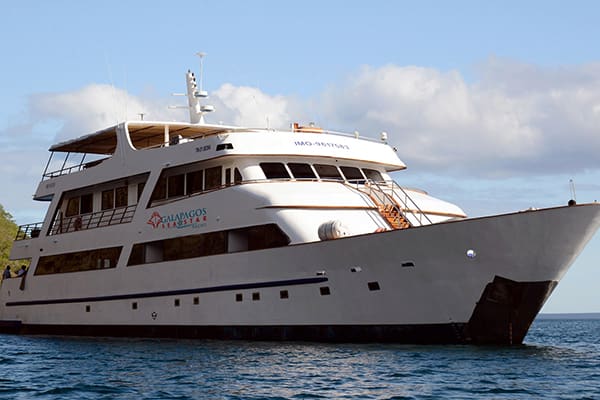
Embarkation
AM: Upon arrival at Baltra Airport, travelers pass through an airport inspection point to insure that no foreign plants or animals are introduced to the islands, as well as to pay the park entrance fee of $100 (unless it has been prepaid). A representative of our M/Y Galápagos Sea Star Journey will meet you, help you collect your luggage, and escort you on a bus ride to the Itabaca Channel and then transfer to Puerto Ayora.
PM: Although the great majority of Galapagos visitors come here to observe and appreciate natural wonders, they also learn how people are working to protect and conserve the islands. The main attractions are the National Park information center, the Van Staelens Exhibition Hall, the Breeding, and Rearing Center for young tortoises and adult Galapagos tortoises in captivity.
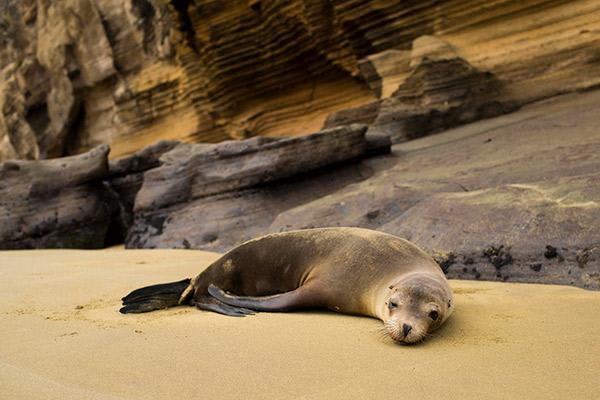
White-tipped Reef Shark Canal & Sierra Negra Volcano
AM: A delightful place reached by a nice zodiac ride. “Tintoreras” are small islands in front of the Puerto Villamil coast. There is Heron lava on the lookout on mangrove branches, and Galapagos penguins and sea lions often pop out onshore. White-tipped reef sharks are fairly common in the archipelago. Their name in Spanish is Tintorera, as well as the name of this site, it is because you can always find them here resting in the shallow waters.
PM: Isabela Island is the largest and one of the youngest islands in the Galapagos archipelago. We land in Puerto Villamil, which has the second smallest population in Galapagos with approximately 3000 habs. We head up to the highlands from Puerto Villamil to the Sierra Negra slope, and later we will do some hiking on uneven terrain until we arrive at the Sierra Negra volcano rim. Sierra Negra is the second widest crater in the world. From this viewpoint, you have fantastic sights to the 6 x 5 -mile-wide crater, the rest of the volcanoes, and Perry Isthmus, a 12 Km wide lava field. In fact, from here we can hike to Chico Volcano to watch the striking lava formations, examples of the geological occurrences that have created the Galapagos Islands.
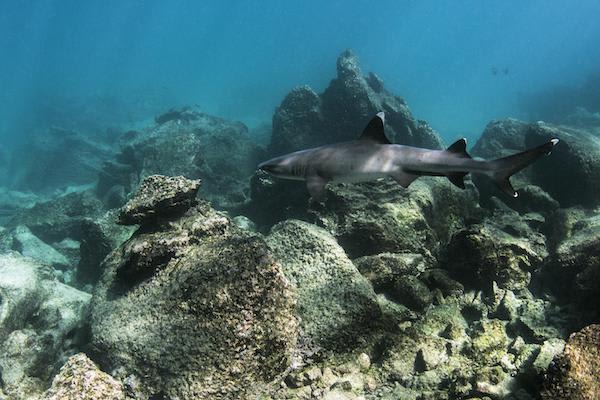
Punta Moreno & Elizabeth Bay
AM: Punta Moreno is located on the north coast of Isabela Island between the volcano Sierra Negra and Cerro Azul volcano. The trail runs along with a lava flow Pahohoe (solidified lava in the form of corrugated or an accordion) into a complex of coastal lagoons, its main attraction are several species of birds that can be found around these lakes and mangroves
PM: This is a marine visitor site, so, the excursion is carried out in a zodiac and so there is no landing point. Your zodiac ride starts with a visit to Mariela's islets because there is the largest and most important penguin colony in the Galapagos Islands. The excursion continues into the cove that is surrounded by red mangroves where you can admire their red roots and green leaves. It is here that you can observe sea turtles, flightless cormorants, spotted eagle rays, golden rays, brown pelicans, and sea lions. Frequently visitors have been able to see Galapagos Hawks soaring overhead whilst schools of Pompano as well as Dorado fish swim below.
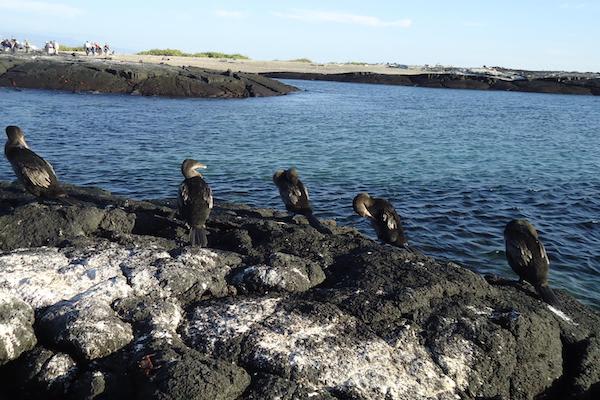
Punta Espinoza & Tagus Cove
AM: Fernandina is the third largest island in the archipelago and it has a single visitor site: Punta Espinoza located at the northeastern tip of the island. However, just across Tagus Cove, you can see some of the unique species of Galapagos. Marine iguanas conglomerate in larger groups than on any other island. They bask around in the sand, swim near the shore, and sometimes block the way at the landing dock. Among the unique species found here, is the Flightless Cormorant. A bird that due to the lack of predators had to adjust its way of survival and improve its skills of finding food in the ocean. Their wings, tails, and feet progressively adapted for swimming. To see these birds is to witness evolution happening right in front of you. Stay within 2m of the cormorants and penguins.
PM: Tagus Cove, a tour along the cliffs in a zodiac will give the visitors a good chance to see the Galapagos penguin, the flightless cormorant as well as other sea birds. From the landing dock, it is about a 30-minute hike along the trail up to the top of the cliff. Here you can see Darwin Lake, an uplifted ultra saline lake saltier than the sea. You can also see several volcanoes from this location. Look carefully at the graffiti on the surrounding cliffs of the cove, it has been written by pirates, whalers, and buccaneers in past centuries.
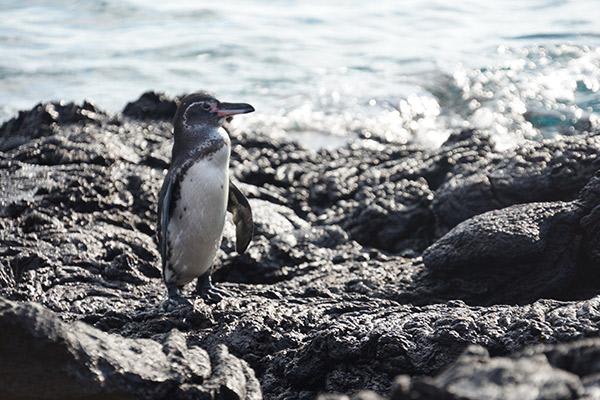
Espumilla Beach & Puerto Egas
AM: Espumilla Beach is located on the northern coast of Santiago Island in James Bay. During the last presence of the El Niño phenomenon, one of the two lagoons in this site underwent a process of sedimentation. Thus causing the disappearance of a representative colony of flamingos. The main attractions are the Palo Santo forest and the marvelous landscape. The beach is an important site for nesting marine turtles.
PM: Its black beach is located on the west side of the island and is the main attraction of the island. Their volcanic tuff deposits have favored the formation of this special black sand beach.
This site is called Puerto Egas, because there was an attempt of the company of Hector Egas, to start the exploitation of salt, which failed. After all, the price of salt in the continent was very cheap and did not justify its exploitation in Galapagos. Although, they abandoned the project and left the infrastructure.
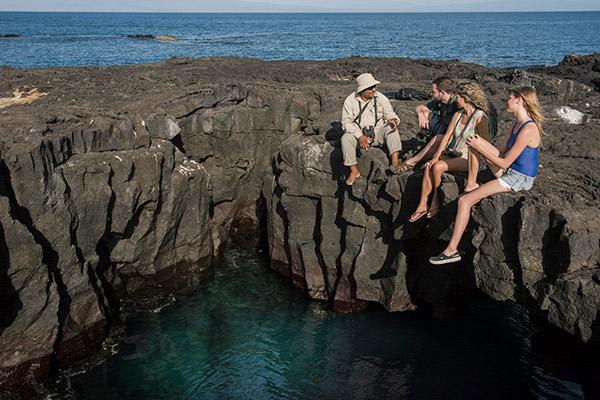
Isla Lobos, Puerto Chino & Breeding Center
AM: This little island is reached at approx 1 hour by panga from Port Baquerizo Moreno, the capital of the Island. The trail will lead across a dry vegetation zone, the substrate of volcanic rocks and sandy areas. There is a small population of blue-footed boobies and frigate birds, which nest in this site. At the beach, you will see a large colony of sea lions. It is common to see shorebirds.
PM: In the afternoon, you will visit Puerto Chino. It is rife with huge cactus over the trail like trees. Once you get on the beach, you will enjoy its surroundings with its wildlife. Sea lions share the beach with people so it's common to see the puppies playing and swimming. Enjoy the deep blue waters with the waves and tide, occasionally there is wildlife to see, especially tortoises.
After, you will visit the Breeding Center Jacinto Gordillo, also known as the “Galapaguera” which is a good place to observe Galapagos tortoises in their natural habitat. San Cristobal island has endemic species such as the Mockingbird Nesomimus melanotis, lava lizard, Chatham Leaf-toed Gecko, and the tortoises. All of these species can be observed in this place, the beach is really big and it works as a nesting zone for marine tortoises.
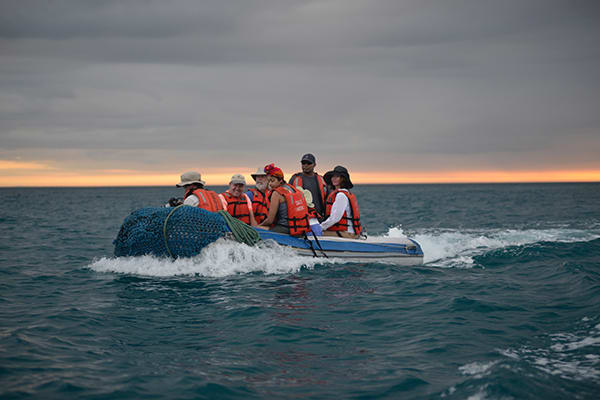
Gardner Bay & Punta Suarez
AM: Located on the north-eastern coast of Hood, Gardner Bay provides an excellent beach for relaxing, swimming, snorkeling, kayaking, and the opportunity to observe sea lions. Here we can also observe sharks in the crystal clear ocean waters.
PM: This rocky land spot sustains one of the most impressive and varied colonies of sea birds in the Galapagos. Along with its southern shore, high cliffs rise from the sea affording the visitor spectacular views of soaring birds and of the blow whole where water spouts up to 50-75 feet into the air according to the intensity of the surf.

Punta Cormorant, Post Office Bay & Baroness Bay
AM: This site offers probably the best flamingo lagoon in the Galapagos; it is also one of the largest in the islands. There are two tuff lava cones between it, so, the area gets a special atmosphere. There are various species of shorebirds to observe besides flamingos; the most frequent are common stilts, white-checked pintail ducks, and, likewise other migratory birds. It is very interesting to see the two distinct beaches: “The Green Beach” (due to its high percentage of olivine crystals in the sand) and the “Flour Sand Beach” which is made up of coral.
PM: Historically, this site is the location of a wooden barrel placed in the 18th century by the crew of a whaling ship. The mariners, as well as tourists, used it as a post office. The idea is to carry letters or postcards to their destination by hand. At the same time, this site was the landing area for some of the first colonists.
We will continue to the north of the island and will visit Baroness Bay, where we will have the opportunity to Kayak and explore the inlets where seabird nesting sites and sea lion colonies can be found. It is said that Baroness Eloisa von Wagner loved this place and spent several hours watching the horizon. It is a beautiful bay that allows you to breathe in the coastal and volcanic scenery. You will enjoy amazing views from the Sea Star sundeck covering the scenery from Enderby islet to Post office bay, Cerro Pajas, the pool of flamingos, and wide forest of Palo Santo.
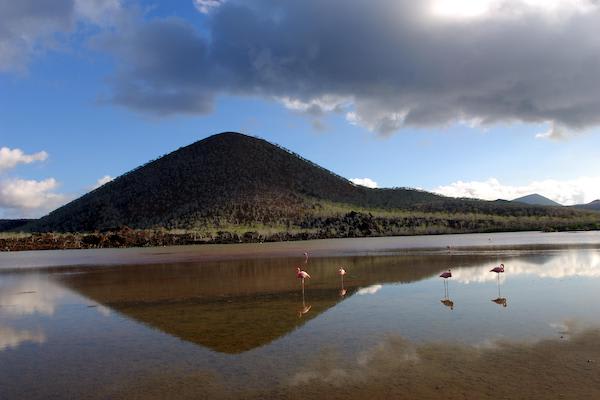
Santa Fe & Plazas
AM: Santa Fe is in the southeastern part of the Galapagos. This island was formed from an uplift instead of a volcanic origin, this is why is mostly flat. Some theories assure this could be the oldest island in the Archipelago. Santa Fe is the home of several endemic species like the Galapagos Hawk, Galapagos snake, Galapagos mockingbird, rice rats, and one of the two species of lands Iguanas of the islands. After disembarkation in the beautiful and clear waters, you will be in contact with one of the many sea lion colonies. You can see many salt bushes along the trail as well giant prickly pear cactus, gigantism is a characteristic of oceanic islands. There are great possibilities of snorkeling with playful sea lions and tropical fishes.
PM: Plazas is at the east of Santa Cruz Island and forms part of two islands known as Islas Plazas. Despite its small size, some of the most interesting and outstanding species of the Galapagos are found here. The Plaza's land iguanas are smaller than their relatives found on other islands. Throughout the island are several hybrid iguanas, a result of crossing a male marine iguana and a female land iguana, they are unique, recognizable at first glance by their black/gray color, with a land iguana’s crest, but face and tail of the marine iguana. The big population of iguanas is due to the presence of tunas, their favorite food. You can see swallow Tailed Gulls nesting along the cliffs with other sea birds as Audubon shearwaters, red-billed tropicbirds, frigate birds, and brown pelicans.

North Seymour & Bachas Beach
AM: Seymour is an uplifted (as opposed to volcanic) island and so is generally flat and strewn with boulders. There are good nesting sites here for a large population of magnificent frigate birds. Blue-footed boobies perform their courtship dance in the more open areas and swallow-tailed gulls perch on the cliff edges. Despite the tremendous surf that can pound the outer shore, sea lions haul out onto the beach, and that you can find surfing.
Watch your step, as the boobies don’t worry much about where they nest, and you might just step on one. The trees are dotted with male frigate birds trying to attract the attention of the ladies by inflating their bright red skin flaps. They sometimes fly in the air to call more attention to themselves. There’s a circular path that takes you through the island to a beautiful, rocky shore where the waves crash a silvery blue.
PM: These two small beaches are in the West of Turtle Cove. Their sand is made of decomposed coral, which makes it white and soft, making it a favorite nesting site for sea turtles. Behind one of the beaches, there is a small brackish water lagoon, where occasionally is possible to observe flamingos and other coastal birds, such as black-necked stilts and whimbrels. The other beach is longer, but it has two old barges abandoned during the Second World War when the USA used Baltra Island as a strategic point to protect the Panama Channel.
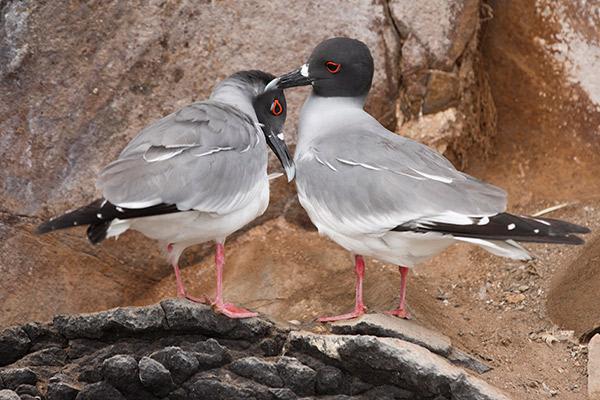
Disembarkation
AM: Mosquera Islet is located between Baltra and North Seymour Islands and it was formed by geological uplift. In its narrowest width reaches 160 meters approximately. This islet has one of the largest populations of sea lions. Visitors can also observe several species of shorebirds, reports of dolphins and orcas if you are lucky.
After this activity, you will go to the Baltra airport for your flight back to the mainland.
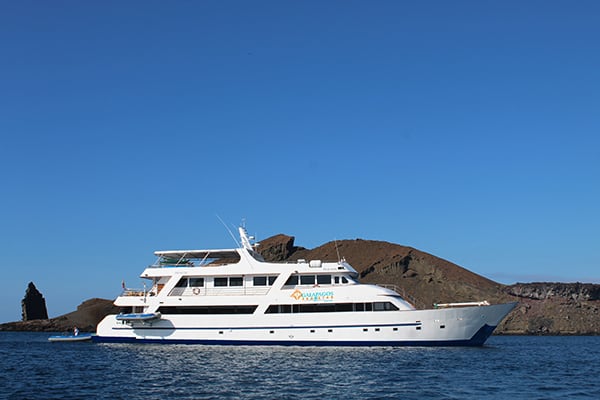
Embarkation
AM: Upon arrival at San Cristobal airport, visitors must go through an inspection in order to verify that no foreign plants or animals are being introduced to the islands. An entrance fee of $100 (unless it has been prepaid) must be paid to the Galapagos National Park in order to conserve the islands. A representative of our M/Y Galápagos Sea Star Journey, will meet you right outside and, help collect your luggage and escort your bus ride to the harbor.
PM: In the afternoon, you will visit Puerto Chino. It is rife with huge cactus aside from the trail-like trees. Once you get on the beach, you will enjoy its surroundings with its wildlife. Sea lions share the beach with people so it's common to see the puppies playing and swimming. Enjoy the deep blue waters with the waves and tide, occasionally there is wildlife to see, especially tortoises.
After some beach time, you will visit the Breeding Center Jacinto Gordillo, also known as the “Galapaguera” which is a good place to observe Galapagos tortoises in their natural habitat. San Cristobal island has endemic species such as the Mockingbird, lava lizard, Chatham Leaf-toed Gecko, and the giant tortoises. All of these species can be observed in this place, the beach is really big and it serves as a nesting zone for marine tortoises.
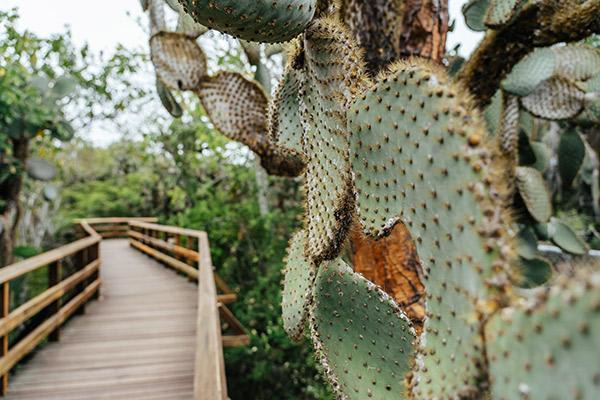
Gardner Bay & Punta Suarez
AM: Located on the north-eastern coast of Hood, Gardner Bay provides an excellent beach for relaxing, swimming, snorkeling, kayaking, and the opportunity to observe sea lions. Here we can also observe sharks in the crystal clear ocean waters.
PM: This rocky land spot sustains one of the most impressive and varied colonies of sea birds in the Galapagos. Along its southern shore, high cliffs rise up from the sea affording the visitor spectacular views of soaring birds and of the blow whole where water spouts up to 50-75 feet into the air according to the intensity of the surf.
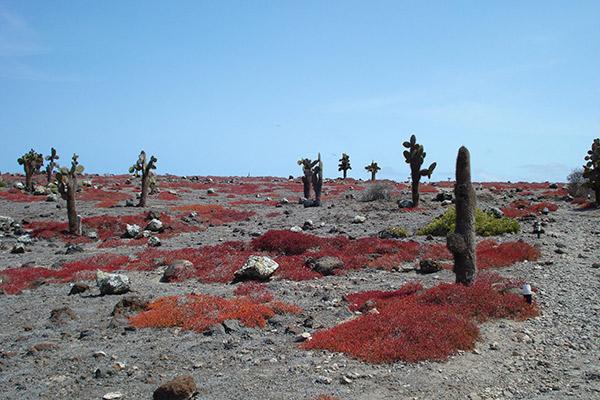
Punta Cormorant, Post Office Bay & Baroness Bay
AM: This site offers probably the best flamingo lagoon in the Galapagos; it is also one of the largest in the islands. There are two tuff lava cones between it, so, the area gets a special atmosphere. There are various species of shorebirds to observe besides flamingos; the most frequent are common stilts, white-checked pintail ducks, and, likewise other migratory birds. It is very interesting to see the two distinct beaches: “The Green Beach” (due to its high percentage of olivine crystals in the sand) and the “Flour Sand Beach” which is made up of coral.
PM: Historically, this site is the location of a wooden barrel placed in the 18th century by the crew of a whaling ship. The mariners, as well as tourists, used it as a post office. The idea is to carry letters or postcards to their destination by hand. At the same time, this site was the landing area for some of the first colonists.
We will continue to the north of the island and will visit Baroness Bay, where we will have the opportunity to Kayak and explore the inlets where seabird nesting sites and sea lion colonies can be found. It is said that Baroness Eloisa von Wagner loved this place and spent several hours watching the horizon. It is a beautiful bay that allows you to breathe in the coastal and volcanic scenery. You will enjoy amazing views from the Sea Star sundeck covering the scenery from Enderby islet to Post office bay, Cerro Pajas, the pool of flamingos, and wide forest of Palo Santo.
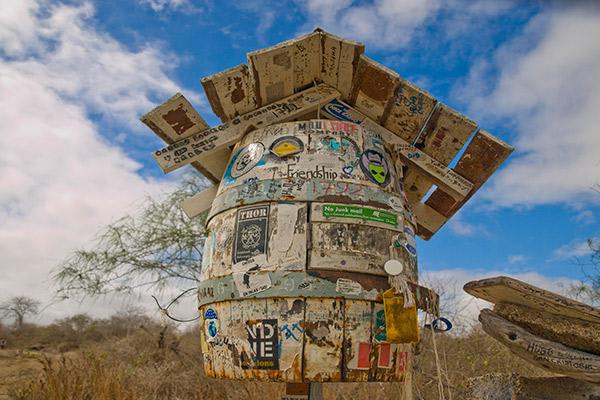
Santa Fe & Plazas
AM: Santa Fe is in the southeastern part of the Galapagos. This island was formed from an uplift instead of a volcanic origin, this is why is mostly flat. Some theories assure this could be the oldest island in the Archipelago. Santa Fe is the home of several endemic species like the Galapagos Hawk, Galapagos snake, Galapagos mockingbird, rice rats, and one of the two species of lands Iguanas of the islands. After disembarkation in the beautiful and clear waters, you will be in contact with one of the many sea lion colonies. You can see many salt bushes along the trail as well giant prickly pear cactus, gigantism is a characteristic of oceanic islands. There are great possibilities of snorkeling with playful sea lions and tropical fishes.
PM: Plazas is at the east of Santa Cruz Island and forms part of two islands known as Islas Plazas. Despite its small size, some of the most interesting and outstanding species of the Galapagos are found here. The Plaza's land iguanas are smaller than their relatives found on other islands. Throughout the island are several hybrid iguanas, a result of crossing a male marine iguana and a female land iguana, they are unique, recognizable at first glance by their black/gray color, with a land iguana’s crest, but face and tail of the marine iguana. The big population of iguanas is due to the presence of tunas, their favorite food. You can see swallow Tailed Gulls nesting along the cliffs with other sea birds as Audubon shearwaters, red-billed tropicbirds, frigate birds, and brown pelicans.
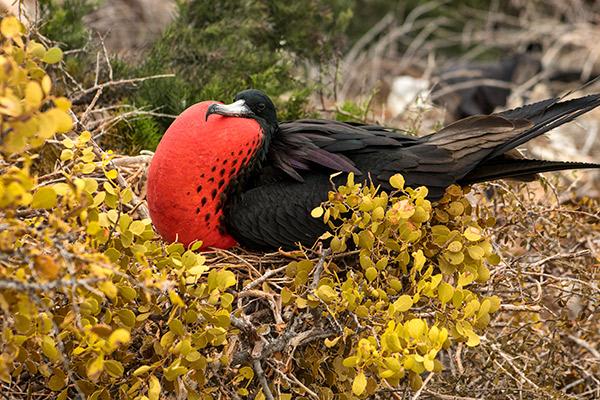
North Seymour & Bachas Beach
AM: Seymour is an uplifted (as opposed to volcanic) island and so is generally flat and strewn with boulders. There are good nesting sites here for a large population of magnificent frigate birds. Blue-footed boobies perform their courtship dance in the more open areas and swallow-tailed gulls perch on the cliff edges. Despite the tremendous surf that can pound the outer shore, sea lions haul out onto the beach, and that you can find surfing.
Watch your step, as the boobies don’t worry much about where they nest, and you might just step on one. The trees are dotted with male frigate birds trying to attract the attention of the ladies by inflating their bright red skin flaps. They sometimes fly in the air to call more attention to themselves. There’s a circular path that takes you through the island to a beautiful, rocky shore where the waves crash a silvery blue.
PM: These two small beaches are in the West of Turtle Cove. Their sand is made of decomposed coral, which makes it white and soft, making it a favorite nesting site for sea turtles. Behind one of the beaches, there is a small brackish water lagoon, where occasionally is possible to observe flamingos and other coastal birds, such as black-necked stilts and whimbrels. The other beach is longer, but it has two old barges abandoned during the Second World War when the USA used Baltra Island as a strategic point to protect the Panama Channel.
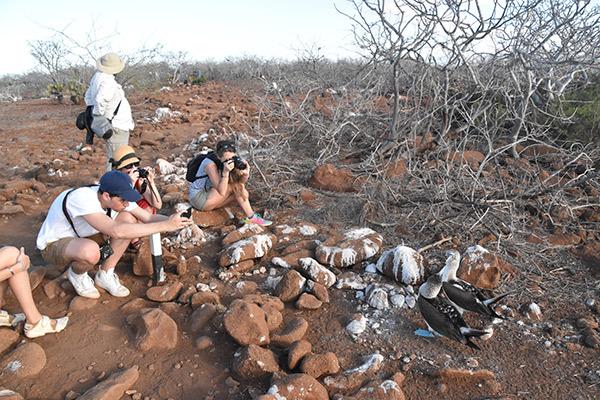
Mosquera Islet & Dragon Hill
AM: Mosquera Islet is located between Baltra and North Seymour Islands and it was formed by a geological uplift, in its narrowest width reaches 160 meters approximately. This islet has one of the largest populations of sea lions, visitors can also observe several species of shorebirds. If you are lucky you can also see dolphins and orcas around this islet.
PM: The visitor site at Dragon Hill has been open for visits since 1993. This site is located in northwestern Santa Cruz Island. It consists of a trail that leads to a hyper-saline lagoon behind the beach. Here you can see flamingos, pintail ducks, and other species of birds. This site has been re-populated with land iguanas from Seymour, Isabela, and Santa Cruz islands. There is a short walk to the Hill, which offers a beautiful view of the bay.
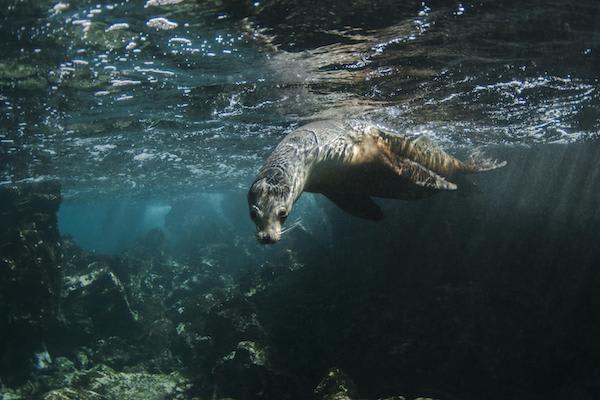
Black Turtle Cove & Chinese Hat Islet
AM: This little cove is located on the northern side of Santa Cruz island, this is a red mangrove lagoon very calm and quiet which made an ideal place as a nursery for many sharks and rays. Its crystal waters allow you to observe large groups of white-tip reef, black-tipped reef and hammerheads sharks, schools of golden rays, and spotted eagle rays. There are no landing sites so the visit is done by panga or kayak. Sea turtles are frequently seen and sometimes they are seen mating in the mangrove-lined waters. Pelicans and Herons are also seen in this area.
PM: This is a small islet (1 sq km) located just o the southeastern tip of Santiago Island. It is a recent volcanic cone, shaped like a Chinese hat when seen from the north side. On the west lava formations, it can be seen, formed under the sea and raised upward, this is why coral heads are found on the lava. This is an excellent visit for the interpretation of geological features such as lava tubes and lava flows. The landscape is covered by sea lions colonies, marine iguanas, and Galapagos penguins.
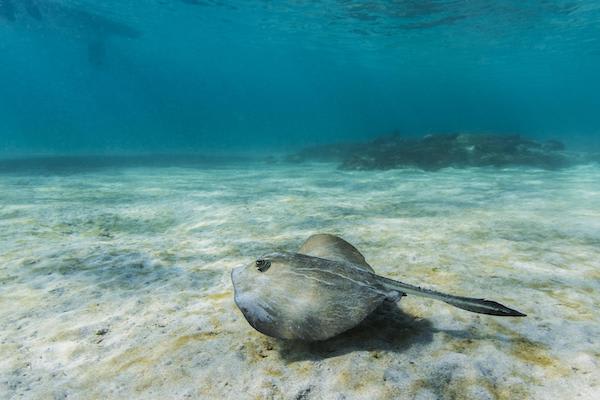
El Barranco & Darwin Bay
AM: The visitor site of El Barranco is located in the southern part of Darwin Bay from Genovesa Island. The trail is on volcanic rock, consists of 1.5 km, and can be done in about 2 hours. The youngest area of the island, from a geological point of view, lies in this area. The cliff is located in the south, is composed of very fragile lava. The natural erosion in these lava flows has become the ideal place for nesting Storm Petrels. You can see two species of petrels that nest in cavities and holes in the lava. One of its main predators is the short-eared owl. The red-footed booby nests only in the outer islands of the archipelago, Punta Pitt, Gardner (Floreana), Wolf, Darwin, and Genovesa. Also present on this island is the masked booby. During the “panga rides” along the cliffs, fur sea lions and several species of seabirds can be seen.
PM: This bay has its origin when the crater of this island collapsed below sea level. The wet landing is on a beautiful white coral sandy beach. This is a favorite island for birdwatchers that allow the following species to be seen: red footed-booby, masked boobies, wandering tattlers, lava gulls, whimbrels, yellow-crowned, and black-crowned lava herons, and yellow warblers. Continuing on the trail, visitors climb gradually to the edge of the cliff seeing Red-Foots nesting in the Mangrove trees below. Bird watching includes sightings of sharp-beaked finches, large cactus and ground finches, Galapagos doves, and swallow-tailed gulls. Reaching the end of the trail, at the cliff's edge, an incredible view of the island and the many birds living there can be observed.
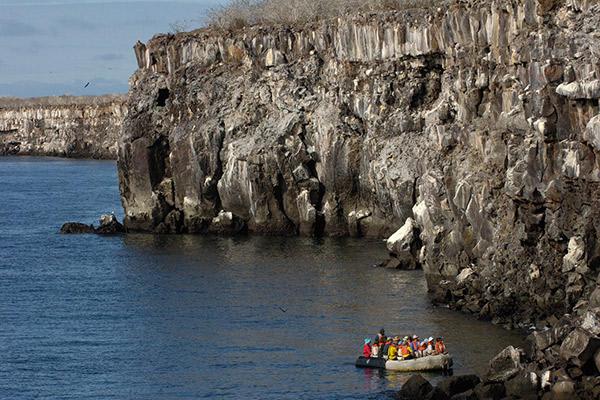
Bartolome & Sullivan Bay
AM: Bartolome Island is situated across Sullivan Bay. It has an altitude of 114 meters, from where we can observe one of the most beautiful sceneries of the Galapagos Islands such as Volcanic cones, lunar-like craters, lava fields, and the famous Toba formed pinnacle eroded by the sea. There is very little vegetation on this island. It has two breathtaking beaches where marine turtles exist and at the base of the pinnacle, as well as a very small colony of Galapagos penguins.
PM: Santiago, also called James, or San Salvador Island is located in the west-central part of the Galapagos archipelago. It is the fourth largest island in the archipelago (following Isabela, Fernandina, and Santa Cruz). Along with some of the large western volcanoes of Isabela and Fernandina, Santiago is also volcanically active, with many young flows and cones to be seen, particularly along the south, west, and east coasts. These may even be seen from the summit of Darwin Volcano and from space. Several historic eruptions have been reported over the last 2 centuries. Santiago consists of two coalesced volcanoes: a typical shield volcano on the northwest end and a low, linear fissure volcano on the southeast end.
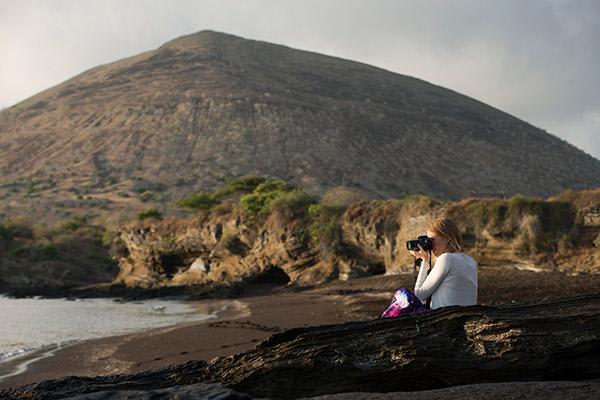
Highlands
AM: The trail to the highlands leaves from Bellavista and passes through the agricultural zone, near the National Park boundary, the Miconia Zone, and then goes to the Fern and Sedge zone. With clear weather, this area affords beautiful scenes of rolling hills and extinct. volcanic cones covered with grass and lush greenery all year round.
PM: Although the great majority of Galapagos visitors come here to observe and appreciate natural wonders, they also learn how people are working to protect and conserve the islands. The main attractions are the National Park information center, the Van Staelens Exhibition Hall, the Breeding, and Rearing Center for young tortoises and adult Galapagos tortoises in captivity.
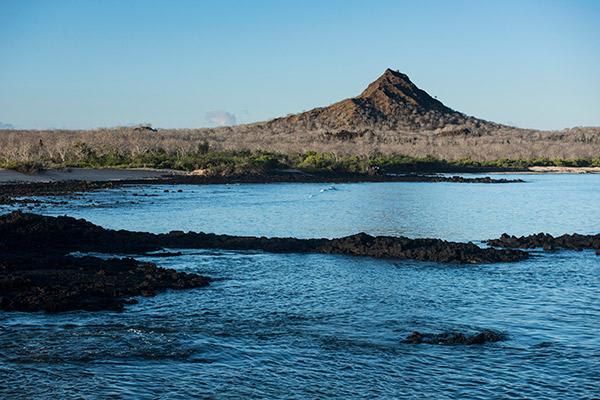
White-tipped Reef Shark Canal & Sierra Negra Volcano
AM: A delightful place reached by a nice zodiac ride. “Tintoreras” are small islands in front of the Puerto Villamil coast. There is Heron lava on the lookout on mangrove branches, and Galapagos penguins and sea lions often pop out onshore. White-tipped reef sharks are fairly common in the archipelago. Their name in Spanish is Tintorera, as well as the name of this site, it is because you can always find them here resting in the shallow waters.
PM: Isabela Island is the largest and one of the youngest islands in the Galapagos archipelago. We land in Puerto Villamil, which has the second smallest population in Galapagos with approximately 3000 habs. We head up to the highlands from Puerto Villamil to the Sierra Negra slope, and later we will do some hiking on uneven terrain until we arrive at the Sierra Negra volcano rim. Sierra Negra is the second widest crater in the world. From this viewpoint, you have fantastic sights to the 6 x 5 -mile-wide crater, the rest of the volcanoes, and Perry Isthmus, a 12 Km wide lava field. In fact, from here we can hike to Chico Volcano to watch the striking lava formations, examples of the geological occurrences that have created the Galapagos Islands.
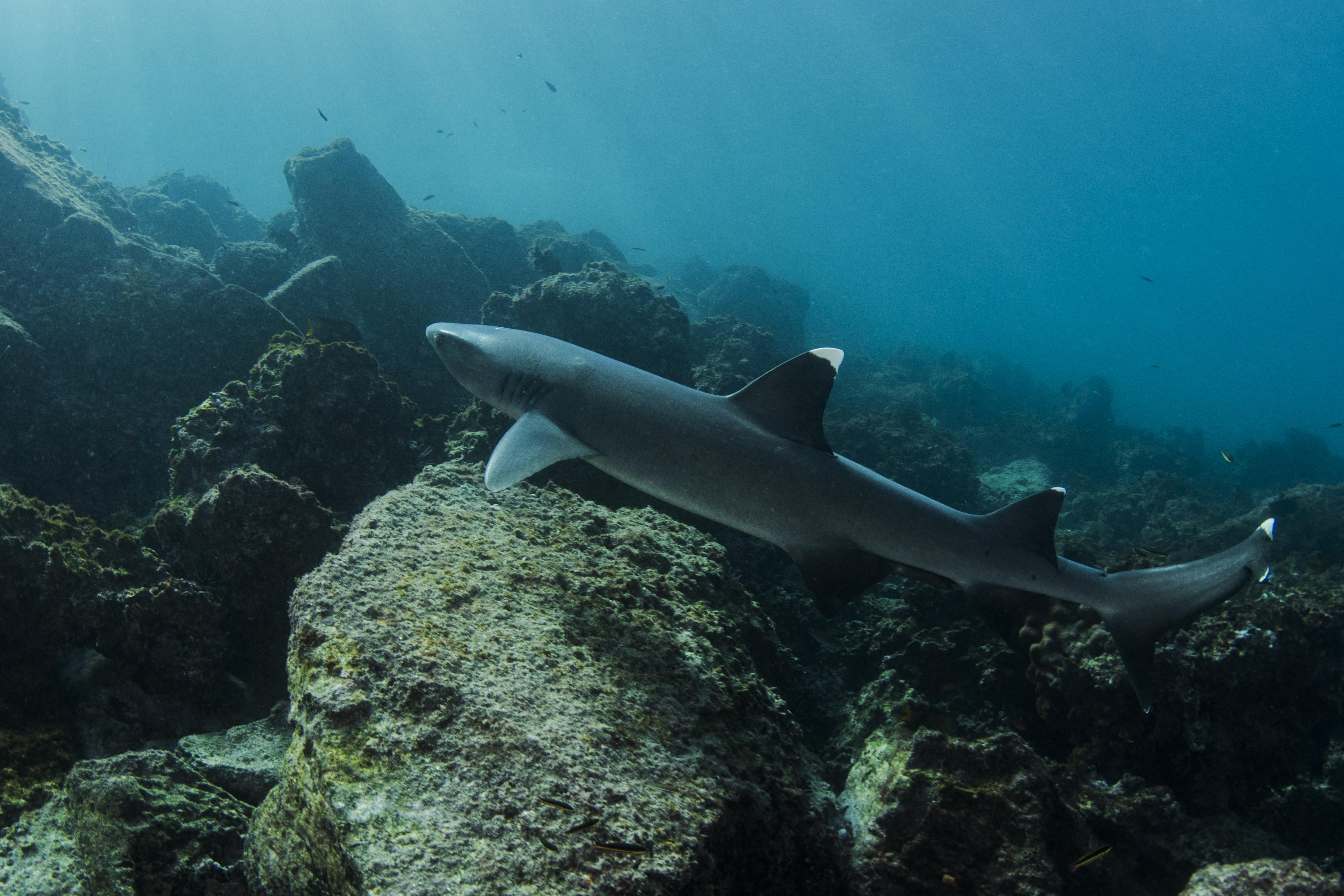
Punta Moreno & Elizabeth Bay
AM: Punta Moreno is located on the north coast of Isabela Island between the volcano Sierra Negra and Cerro Azul volcano. The trail runs along with a lava flow Pahohoe (solidified lava in the form of corrugated or an accordion) into a complex of coastal lagoons, its main attraction are several species of birds that can be found around these lakes and mangroves
PM: This is a marine visitor site, so, the excursion is carried out in a zodiac and so there is no landing point. Your zodiac ride starts with a visit to Mariela's islets because there is the largest and most important penguin colony in the Galapagos Islands. The excursion continues into the cove that is surrounded by red mangroves where you can admire their red roots and green leaves. It is here that you can observe sea turtles, flightless cormorants, spotted eagle rays, golden rays, brown pelicans, and sea lions. Frequently visitors have been able to see Galapagos Hawks soaring overhead whilst schools of Pompano as well as Dorado fish swim below.
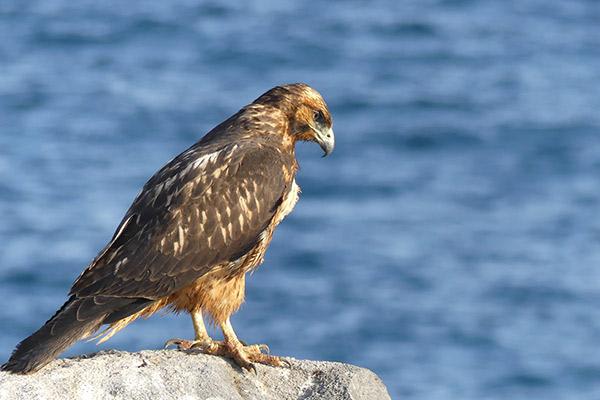
Punta Espinoza & Tagus Cove
AM: Fernandina is the third largest island in the archipelago and it has a single visitor site: Punta Espinoza located at the northeastern tip of the island. However, just across Tagus Cove, you can see some of the unique species of Galapagos. Marine iguanas conglomerate in larger groups than on any other island. They bask around in the sand, swim near the shore, and sometimes block the way at the landing dock. Among the unique species found here, is the Flightless Cormorant. A bird that due to the lack of predators had to adjust its way of survival and improve its skills of finding food in the ocean. Their wings, tails, and feet progressively adapted for swimming. To see these birds is to witness evolution happening right in front of you. Stay within 2m of the cormorants and penguins.
PM: Tagus Cove, a tour along the cliffs in a zodiac will give the visitors a good chance to see the Galapagos penguin, the flightless cormorant as well as other sea birds. From the landing dock, it is about a 30-minute hike along the trail up to the top of the cliff. Here you can see Darwin Lake, an uplifted ultra saline lake saltier than the sea. You can also see several volcanoes from this location. Look carefully at the graffiti on the surrounding cliffs of the cove, it has been written by pirates, whalers, and buccaneers in past centuries.
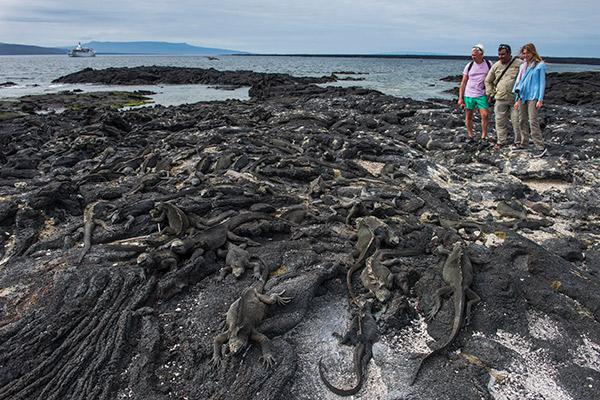
Espumilla Beach & Puerto Egas
AM: Espumilla Beach is located on the northern coast of Santiago Island in James Bay. During the last presence of the El Niño phenomenon, one of the two lagoons in this site underwent a process of sedimentation. Thus causing the disappearance of a representative colony of flamingos. The main attractions are the Palo Santo forest and the marvelous landscape. The beach is an important site for nesting marine turtles.
PM: Its black beach is located on the west side of the island and is the main attraction of the island. Their volcanic tuff deposits have favored the formation of this special black sand beach.
This site is called Puerto Egas, because there was an attempt of the company of Hector Egas, to start the exploitation of salt, which failed. After all, the price of salt in the continent was very cheap and did not justify its exploitation in Galapagos. Although, they abandoned the project and left the infrastructure.
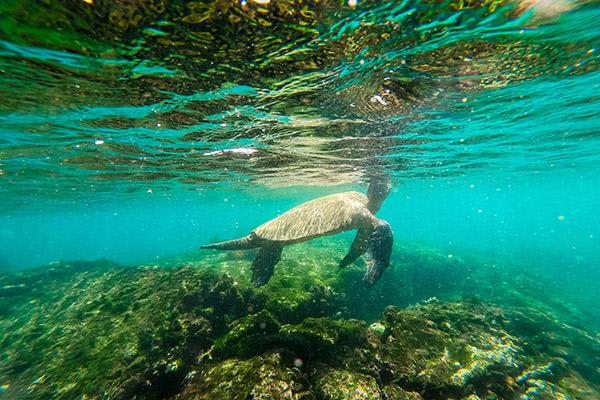
Disembarkation
AM: This little island is reached at approx 1 hour by panga from Port Baquerizo Moreno, the capital of the Island. The trail will lead across a dry vegetation zone, the substrate of volcanic rocks and sandy areas. There is a small population of blue-footed boobies and frigate birds, which nest in this site. At the beach, you will see a large colony of sea lions. It is common to see shorebirds.
After your visit to Isla Lobos, transfer to the airport in San Cristobal and Flight back to Quito or Guayaquil.
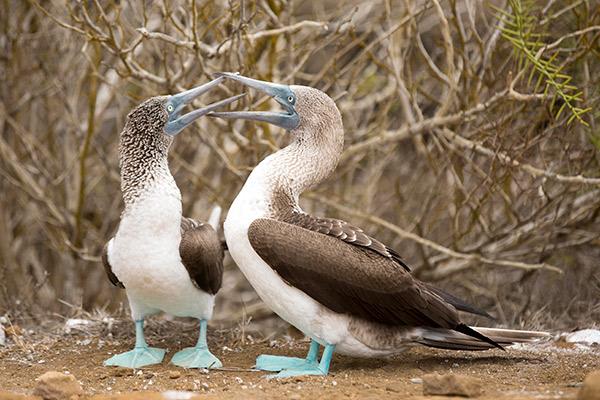
Embarkation
AM: Upon arrival at Baltra Airport, visitors must go through an inspection to verify that no foreign plants or animals are being introduced to the islands. An entrance fee of $100 (unless it has been prepaid) must be paid to the Galapagos National Park to conserve the islands. A representative of our M/Y Galápagos Se Star Journey, will meet you right outside, help collect your luggage, and escort your bus ride to Puerto Ayora Village.
PM: The visitor site at Dragon Hill has been opened for visits since 1993. This site is located in northwestern Santa Cruz Island and consists of a trail that leads to a hyper-saline lagoon behind the beach, frequented by flamingos, pintail ducks, and other species of birds. This site has been re-populated with land iguanas from Seymour, Isabela, and Santa Cruz islands. There is a short walk to the Hill, which offers a beautiful view of the bay.
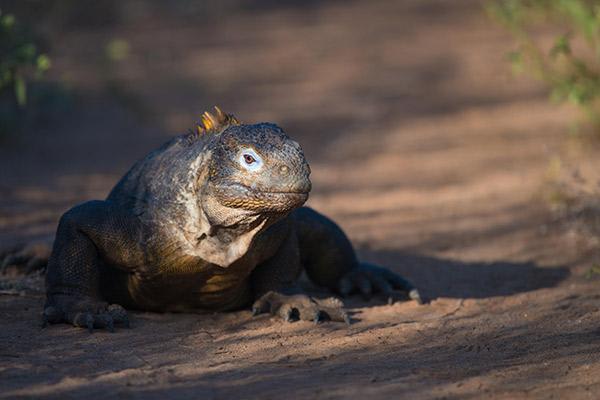
Black Turtle Cove & Chinese Hat Islet
AM: This little cove is located on the northern side of Santa Cruz island, this is a red mangrove lagoon very calm and quiet which made an ideal place as a nursery for many sharks and rays. Its crystal waters allow you to observe large groups of white-tip reef, black-tipped reef and hammerheads sharks, schools of golden rays, and spotted eagle rays. There are no landing sites so the visit is done by panga or kayak. Sea turtles are frequently seen and sometimes they are seen mating in the mangrove-lined waters. Pelicans and Herons are also seen in this area.
PM: This is a small islet (1 sq km) located just o the southeastern tip of Santiago Island. It is a recent volcanic cone, shaped like a Chinese hat when seen from the north side. On the west lava formations, it can be seen, formed under the sea and raised upward, this is why coral heads are found on the lava. This is an excellent visit for the interpretation of geological features such as lava tubes and lava flows. The landscape is covered by sea lions colonies, marine iguanas, and Galapagos penguins.
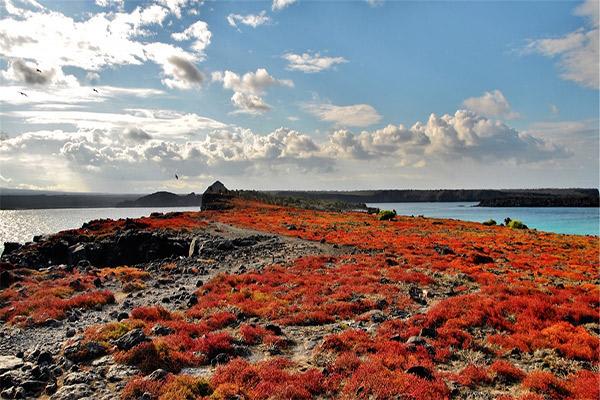
El Barranco & Darwin Bay
AM: The visitor site of El Barranco is located in the southern part of Darwin Bay from Genovesa Island. The trail is on volcanic rock, consists of 1.5 km, and can be done in about 2 hours. The youngest area of the island, from a geological point of view, lies in this area. The cliff is located in the south, is composed of very fragile lava. The natural erosion in these lava flows has become the ideal place for nesting Storm Petrels. You can see two species of petrels that nest in cavities and holes in the lava. One of its main predators is the short-eared owl. The red-footed booby nests only in the outer islands of the archipelago, Punta Pitt, Gardner (Floreana), Wolf, Darwin, and Genovesa. Also present on this island is the masked booby. During the “panga rides” along the cliffs, fur sea lions and several species of seabirds can be seen.
PM: This bay has its origin when the crater of this island collapsed below sea level. The wet landing is on a beautiful white coral sandy beach. This is a favorite island for birdwatchers that allow the following species to be seen: red footed-booby, masked boobies, wandering tattlers, lava gulls, whimbrels, yellow-crowned, and black-crowned lava herons, and yellow warblers. Continuing on the trail, visitors climb gradually to the edge of the cliff seeing Red-Foots nesting in the Mangrove trees below. Bird watching includes sightings of sharp-beaked finches, large cactus and ground finches, Galapagos doves, and swallow-tailed gulls. Reaching the end of the trail, at the cliff's edge, an incredible view of the island and the many birds living there can be observed.
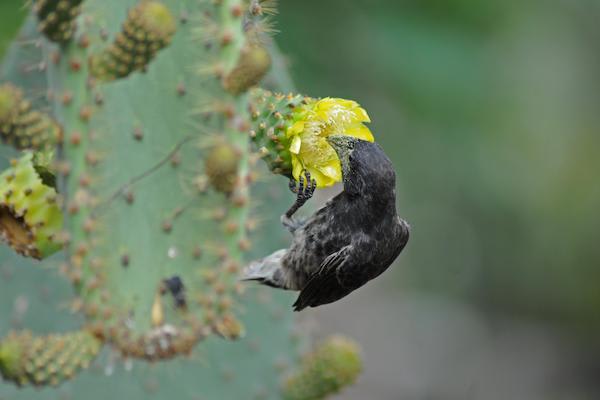
Bartolome & Sullivan Bay
AM: Bartolome Island is situated across Sullivan Bay. It has an altitude of 114 meters, from where we can observe one of the most beautiful sceneries of the Galapagos Islands such as Volcanic cones, lunar-like craters, lava fields, and the famous Toba formed pinnacle eroded by the sea. There is very little vegetation on this island. It has two breathtaking beaches where marine turtles exist and at the base of the pinnacle, as well as a very small colony of Galapagos penguins.
PM: Santiago, also called James, or San Salvador Island is located in the west-central part of the Galapagos archipelago. It is the fourth largest island in the archipelago (following Isabela, Fernandina, and Santa Cruz). Along with some of the large western volcanoes of Isabela and Fernandina, Santiago is also volcanically active, with many young flows and cones to be seen, particularly along the south, west, and east coasts. These may even be seen from the summit of Darwin Volcano and from space. Several historic eruptions have been reported over the last 2 centuries. Santiago consists of two coalesced volcanoes: a typical shield volcano on the northwest end and a low, linear fissure volcano on the southeast end.
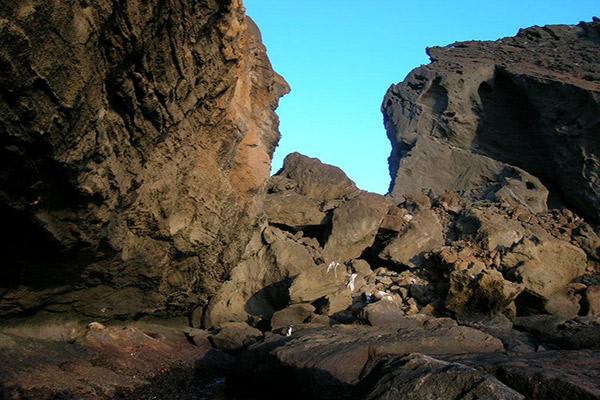
Highlands & Charles Darwin Station
AM: The trail to the highlands leaves from Bellavista and passes through the agricultural zone, near the National Park boundary, the Miconia Zone, and then goes to the Fern and Sedge zone. With clear weather (unpredictable) this area affords beautiful scenes of rolling hills and extinct volcanic cones covered with grass and lush greenery all year round.
PM: Although the great majority of Galapagos visitors come here to observe and appreciate natural wonders. You can also learn about how they work in the protection and conservation of the islands. The main attractions are the National Park information center, the Van Staelens Exhibition Hall, the Breeding, and Rearing Center for young tortoises and adult Galapagos tortoises in captivity.

White-tipped Reef Shark Canal & Sierra Negra Volcano
AM: A delightful place reached by a nice zodiac ride. “Tintoreras” are small islands in front of the Puerto Villamil coast. There is Heron lava on the lookout on mangrove branches, and Galapagos penguins and sea lions often pop out onshore. White-tipped reef sharks are fairly common in the archipelago. Their name in Spanish is Tintorera, as well as the name of this site, it is because you can always find them here resting in the shallow waters.
PM: Isabela Island is the largest and one of the youngest islands in the Galapagos archipelago. We land in Puerto Villamil, which has the second smallest population in Galapagos with approximately 3000 habs. We head up to the highlands from Puerto Villamil to the Sierra Negra slope, and later we will do some hiking on uneven terrain until we arrive at the Sierra Negra volcano rim. Sierra Negra is the second widest crater in the world. From this viewpoint, you have fantastic sights to the 6 x 5 -mile-wide crater, the rest of the volcanoes, and Perry Isthmus, a 12 Km wide lava field. In fact, from here we can hike to Chico Volcano to watch the striking lava formations, examples of the geological occurrences that have created the Galapagos Islands.
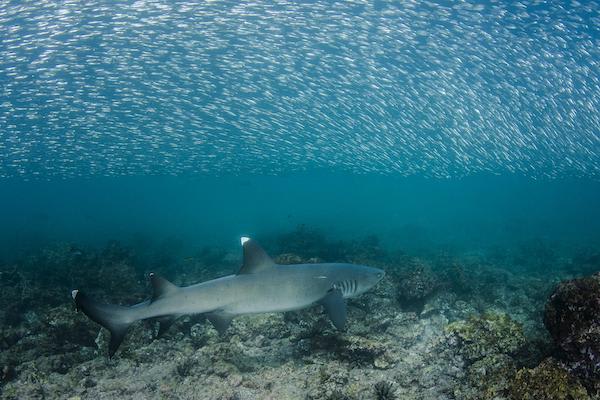
Punta Moreno & Elizabeth Bay
AM: Punta Moreno is located on the north coast of Isabela Island between the volcano Sierra Negra and Cerro Azul volcano. The trail runs along with a lava flow Pahohoe (solidified lava in the form of corrugated or an accordion) into a complex of coastal lagoons, its main attraction are several species of birds that can be found around these lakes and mangroves
PM: This is a marine visitor site, so, the excursion is carried out in a zodiac and so there is no landing point. Your zodiac ride starts with a visit to Mariela's islets because there is the largest and most important penguin colony in the Galapagos Islands. The excursion continues into the cove that is surrounded by red mangroves where you can admire their red roots and green leaves. It is here that you can observe sea turtles, flightless cormorants, spotted eagle rays, golden rays, brown pelicans, and sea lions. Frequently visitors have been able to see Galapagos Hawks soaring overhead whilst schools of Pompano as well as Dorado fish swim below.
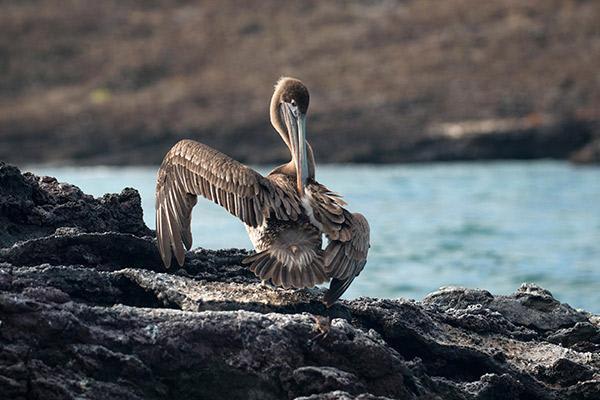
Punta Espinoza & Tagus Cove
AM: Fernandina is the third largest island in the archipelago and it has a single visitor site: Punta Espinoza located at the northeastern tip of the island. However, just across Tagus Cove, you can see some of the unique species of Galapagos. Marine iguanas conglomerate in larger groups than on any other island. They bask around in the sand, swim near the shore, and sometimes block the way at the landing dock. Among the unique species found here, is the Flightless Cormorant. A bird that due to the lack of predators had to adjust its way of survival and improve its skills of finding food in the ocean. Their wings, tails, and feet progressively adapted for swimming. To see these birds is to witness evolution happening right in front of you. Stay within 2m of the cormorants and penguins.
PM: Tagus Cove, a tour along the cliffs in a zodiac will give the visitors a good chance to see the Galapagos penguin, the flightless cormorant as well as other sea birds. From the landing dock, it is about a 30-minute hike along the trail up to the top of the cliff. Here you can see Darwin Lake, an uplifted ultra saline lake saltier than the sea. You can also see several volcanoes from this location. Look carefully at the graffiti on the surrounding cliffs of the cove, it has been written by pirates, whalers, and buccaneers in past centuries.
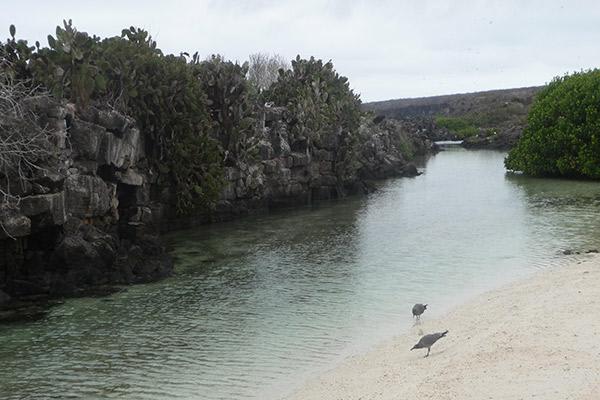
Espumilla Beach & Puerto Egas
AM: Espumilla Beach is located on the northern coast of Santiago Island in James Bay. During the last presence of the El Niño phenomenon, one of the two lagoons in this site underwent a process of sedimentation. Thus causing the disappearance of a representative colony of flamingos. The main attractions are the Palo Santo forest and the marvelous landscape. The beach is an important site for nesting marine turtles.
PM: Its black beach is located on the west side of the island and is the main attraction of the island. Their volcanic tuff deposits have favored the formation of this special black sand beach.
This site is called Puerto Egas, because there was an attempt of the company of Hector Egas, to start the exploitation of salt, which failed. After all, the price of salt in the continent was very cheap and did not justify its exploitation in Galapagos. Although, they abandoned the project and left the infrastructure.
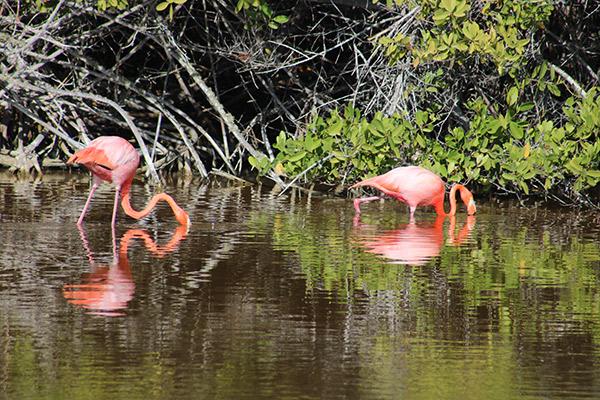
Isla Lobos, Puerto Chino & Breeding Center
AM: This little island is reached at approx 1 hour by panga from Port Baquerizo Moreno, the capital of the Island. The trail will lead across a dry vegetation zone, the substrate of volcanic rocks and sandy areas. There is a small population of blue-footed boobies and frigate birds, which nest in this site. At the beach, you will see a large colony of sea lions. It is common to see shorebirds.
PM: In the afternoon, you will visit Puerto Chino. It is rife with huge cactus over the trail like trees. Once you get on the beach, you will enjoy its surroundings with its wildlife. Sea lions share the beach with people so it's common to see the puppies playing and swimming. Enjoy the deep blue waters with the waves and tide, occasionally there is wildlife to see, especially tortoises.
After, you will visit the Breeding Center Jacinto Gordillo, also known as the “Galapaguera” which is a good place to observe Galapagos tortoises in their natural habitat. San Cristobal island has endemic species such as the Mockingbird Nesomimus melanotis, lava lizard, Chatham Leaf-toed Gecko, and the tortoises. All of these species can be observed in this place, the beach is really big and it works as a nesting zone for marine tortoises.
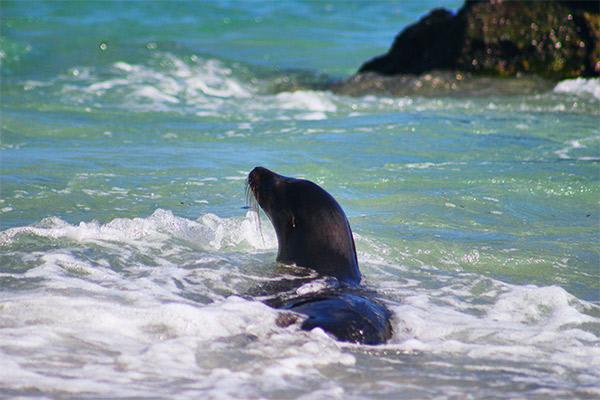
Gardner Bay & Punta Suarez
AM: Located on the north-eastern coast of Hood, Gardner Bay provides an excellent beach for relaxing, swimming, snorkeling, kayaking, and the opportunity to observe sea lions. Here we can also observe sharks in the crystal clear ocean waters.
PM: This rocky land spot sustains one of the most impressive and varied colonies of sea birds in the Galapagos. Along with its southern shore, high cliffs rise from the sea affording the visitor spectacular views of soaring birds and of the blow whole where water spouts up to 50-75 feet into the air according to the intensity of the surf.
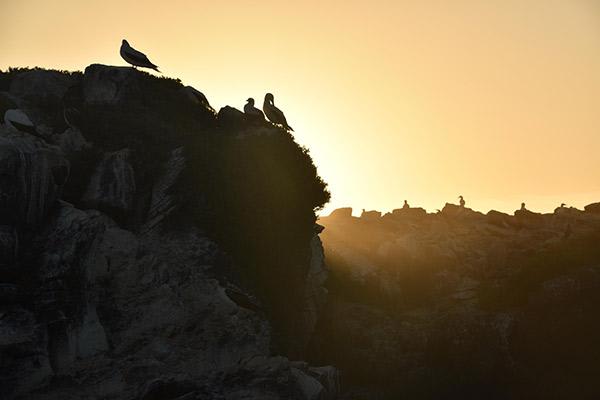
Punta Cormorant, Post Office Bay & Baroness Bay
AM: This site offers probably the best flamingo lagoon in the Galapagos; it is also one of the largest in the islands. There are two tuff lava cones between it, so, the area gets a special atmosphere. There are various species of shorebirds to observe besides flamingos; the most frequent are common stilts, white-checked pintail ducks, and, likewise other migratory birds. It is very interesting to see the two distinct beaches: “The Green Beach” (due to its high percentage of olivine crystals in the sand) and the “Flour Sand Beach” which is made up of coral.
PM: Historically, this site is the location of a wooden barrel placed in the 18th century by the crew of a whaling ship. The mariners, as well as tourists, used it as a post office. The idea is to carry letters or postcards to their destination by hand. At the same time, this site was the landing area for some of the first colonists.
We will continue to the north of the island and will visit Baroness Bay, where we will have the opportunity to Kayak and explore the inlets where seabird nesting sites and sea lion colonies can be found. It is said that Baroness Eloisa von Wagner loved this place and spent several hours watching the horizon. It is a beautiful bay that allows you to breathe in the coastal and volcanic scenery. You will enjoy amazing views from the Sea Star sundeck covering the scenery from Enderby islet to Post office bay, Cerro Pajas, the pool of flamingos, and wide forest of Palo Santo.
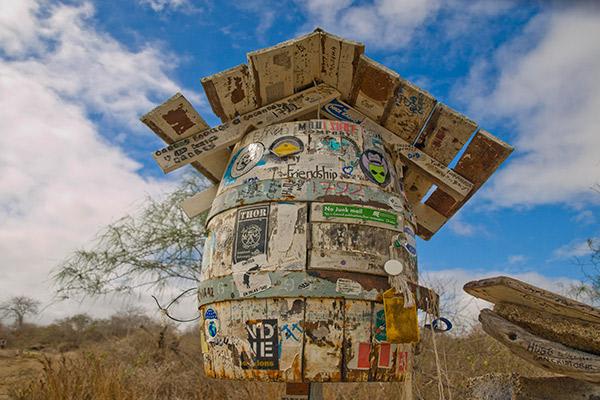
Santa Fe & Plazas
AM: Santa Fe is in the southeastern part of the Galapagos. This island was formed from an uplift instead of a volcanic origin, this is why is mostly flat. Some theories assure this could be the oldest island in the Archipelago. Santa Fe is the home of several endemic species like the Galapagos Hawk, Galapagos snake, Galapagos mockingbird, rice rats, and one of the two species of lands Iguanas of the islands. After disembarkation in the beautiful and clear waters, you will be in contact with one of the many sea lion colonies. You can see many salt bushes along the trail as well giant prickly pear cactus, gigantism is a characteristic of oceanic islands. There are great possibilities of snorkeling with playful sea lions and tropical fishes.
PM: Plazas is at the east of Santa Cruz Island and forms part of two islands known as Islas Plazas. Despite its small size, some of the most interesting and outstanding species of the Galapagos are found here. The Plaza's land iguanas are smaller than their relatives found on other islands. Throughout the island are several hybrid iguanas, a result of crossing a male marine iguana and a female land iguana, they are unique, recognizable at first glance by their black/gray color, with a land iguana’s crest, but face and tail of the marine iguana. The big population of iguanas is due to the presence of tunas, their favorite food. You can see swallow Tailed Gulls nesting along the cliffs with other sea birds as Audubon shearwaters, red-billed tropicbirds, frigate birds, and brown pelicans.

North Seymour & Bachas Beach
AM: Seymour is an uplifted (as opposed to volcanic) island and so is generally flat and strewn with boulders. There are good nesting sites here for a large population of magnificent frigate birds. Blue-footed boobies perform their courtship dance in the more open areas and swallow-tailed gulls perch on the cliff edges. Despite the tremendous surf that can pound the outer shore, sea lions haul out onto the beach, and that you can find surfing.
Watch your step, as the boobies don’t worry much about where they nest, and you might just step on one. The trees are dotted with male frigate birds trying to attract the attention of the ladies by inflating their bright red skin flaps. They sometimes fly in the air to call more attention to themselves. There’s a circular path that takes you through the island to a beautiful, rocky shore where the waves crash a silvery blue.
PM: These two small beaches are in the West of Turtle Cove. Their sand is made of decomposed coral, which makes it white and soft, making it a favorite nesting site for sea turtles. Behind one of the beaches, there is a small brackish water lagoon, where occasionally is possible to observe flamingos and other coastal birds, such as black-necked stilts and whimbrels. The other beach is longer, but it has two old barges abandoned during the Second World War when the USA used Baltra Island as a strategic point to protect the Panama Channel.
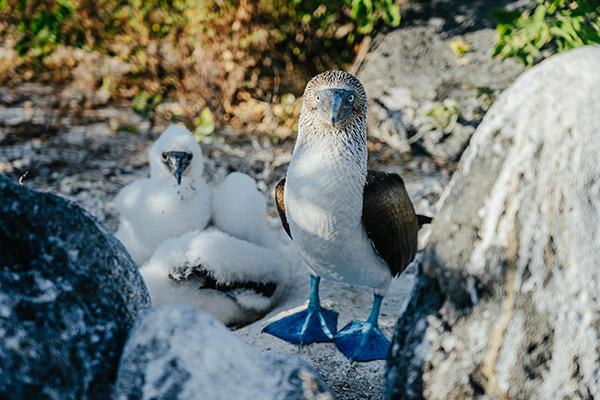
Disembarkation
AM: Mosquera Islet is located between Baltra and North Seymour Islands and it was formed by geological uplift. In its narrowest width reaches 160 meters approximately. This islet has one of the largest populations of sea lions. Visitors can also observe several species of shorebirds, reports of dolphins and orcas if you are lucky.
After this activity, you will go to the Baltra airport for your flight back to the mainland.
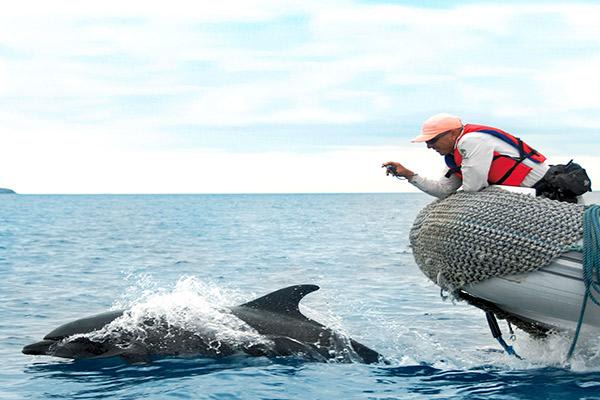
Embarkation
AM: Upon arrival at Baltra Airport, travelers pass through an airport inspection point to insure that no foreign plants or animals are introduced to the islands, as well as to pay the park entrance fee of $100 (unless it has been prepaid). A representative of our M/Y Galápagos Sea Star Journey will meet you, help you collect your luggage, and escort you on a bus ride to the Itabaca Channel and then transfer to Puerto Ayora.
PM: Although the great majority of Galapagos visitors come here to observe and appreciate natural wonders, they also learn how people are working to protect and conserve the islands. The main attractions are the National Park information center, the Van Staelens Exhibition Hall, the Breeding, and Rearing Center for young tortoises and adult Galapagos tortoises in captivity.

White-tipped Reef Shark Canal & Sierra Negra Volcano
AM: A delightful place reached by a nice zodiac ride. “Tintoreras” are small islands in front of the Puerto Villamil coast. There is Heron lava on the lookout on mangrove branches, and Galapagos penguins and sea lions often pop out onshore. White-tipped reef sharks are fairly common in the archipelago. Their name in Spanish is Tintorera, as well as the name of this site, it is because you can always find them here resting in the shallow waters.
PM: Isabela Island is the largest and one of the youngest islands in the Galapagos archipelago. We land in Puerto Villamil, which has the second smallest population in Galapagos with approximately 3000 habs. We head up to the highlands from Puerto Villamil to the Sierra Negra slope, and later we will do some hiking on uneven terrain until we arrive at the Sierra Negra volcano rim. Sierra Negra is the second widest crater in the world. From this viewpoint, you have fantastic sights to the 6 x 5 -mile-wide crater, the rest of the volcanoes, and Perry Isthmus, a 12 Km wide lava field. In fact, from here we can hike to Chico Volcano to watch the striking lava formations, examples of the geological occurrences that have created the Galapagos Islands.
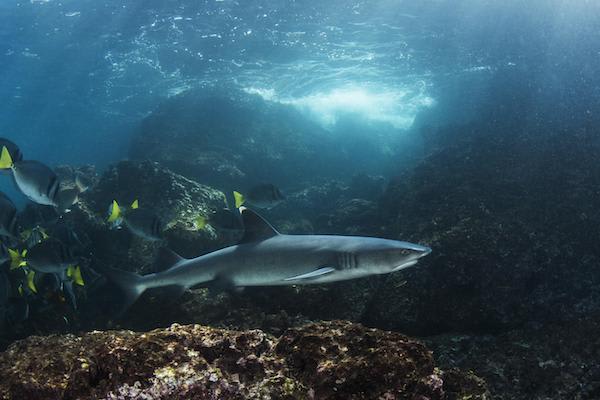
Punta Moreno & Elizabeth Bay
AM: Punta Moreno is located on the north coast of Isabela Island between the volcano Sierra Negra and Cerro Azul volcano. The trail runs along with a lava flow Pahohoe (solidified lava in the form of corrugated or an accordion) into a complex of coastal lagoons, its main attraction are several species of birds that can be found around these lakes and mangroves
PM: This is a marine visitor site, so, the excursion is carried out in a zodiac and so there is no landing point. Your zodiac ride starts with a visit to Mariela's islets because there is the largest and most important penguin colony in the Galapagos Islands. The excursion continues into the cove that is surrounded by red mangroves where you can admire their red roots and green leaves. It is here that you can observe sea turtles, flightless cormorants, spotted eagle rays, golden rays, brown pelicans, and sea lions. Frequently visitors have been able to see Galapagos Hawks soaring overhead whilst schools of Pompano as well as Dorado fish swim below.
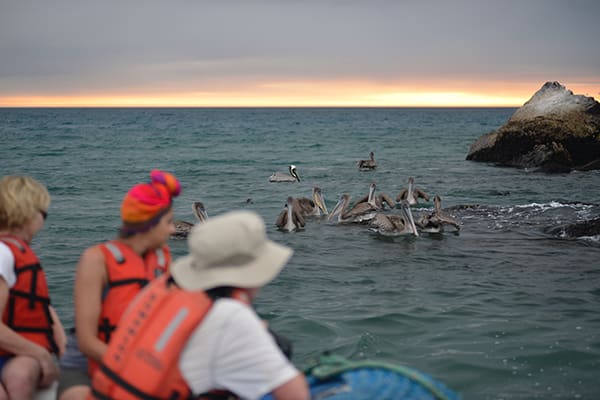
Punta Espinoza & Tagus Cove
AM: Fernandina is the third largest island in the archipelago and it has a single visitor site: Punta Espinoza located at the northeastern tip of the island. However, just across Tagus Cove, you can see some of the unique species of Galapagos. Marine iguanas conglomerate in larger groups than on any other island. They bask around in the sand, swim near the shore, and sometimes block the way at the landing dock. Among the unique species found here, is the Flightless Cormorant. A bird that due to the lack of predators had to adjust its way of survival and improve its skills of finding food in the ocean. Their wings, tails, and feet progressively adapted for swimming. To see these birds is to witness evolution happening right in front of you. Stay within 2m of the cormorants and penguins.
PM: Tagus Cove, a tour along the cliffs in a zodiac will give the visitors a good chance to see the Galapagos penguin, the flightless cormorant as well as other sea birds. From the landing dock, it is about a 30-minute hike along the trail up to the top of the cliff. Here you can see Darwin Lake, an uplifted ultra saline lake saltier than the sea. You can also see several volcanoes from this location. Look carefully at the graffiti on the surrounding cliffs of the cove, it has been written by pirates, whalers, and buccaneers in past centuries.
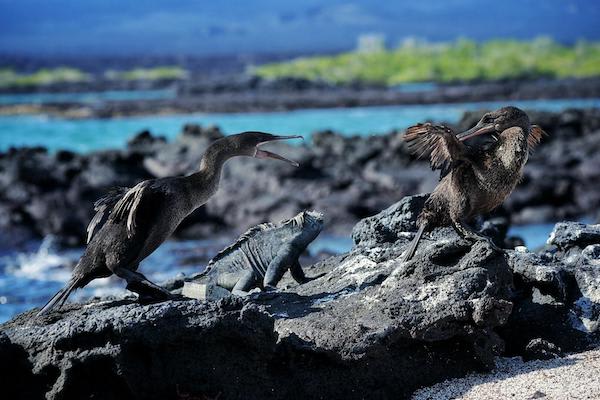
Espumilla Beach & Puerto Egas
AM: Espumilla Beach is located on the northern coast of Santiago Island in James Bay. During the last presence of the El Niño phenomenon, one of the two lagoons in this site underwent a process of sedimentation. Thus causing the disappearance of a representative colony of flamingos. The main attractions are the Palo Santo forest and the marvelous landscape. The beach is an important site for nesting marine turtles.
PM: Its black beach is located on the west side of the island and is the main attraction of the island. Their volcanic tuff deposits have favored the formation of this special black sand beach.
This site is called Puerto Egas, because there was an attempt of the company of Hector Egas, to start the exploitation of salt, which failed. After all, the price of salt in the continent was very cheap and did not justify its exploitation in Galapagos. Although, they abandoned the project and left the infrastructure.
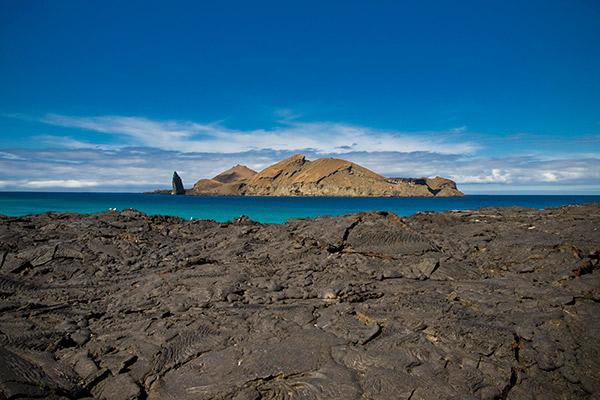
Isla Lobos, Puerto Chino & Breeding Center
AM: This little island is reached at approx 1 hour by panga from Port Baquerizo Moreno, the capital of the Island. The trail will lead across a dry vegetation zone, the substrate of volcanic rocks and sandy areas. There is a small population of blue-footed boobies and frigate birds, which nest in this site. At the beach, you will see a large colony of sea lions. It is common to see shorebirds.
PM: In the afternoon, you will visit Puerto Chino. It is rife with huge cactus over the trail like trees. Once you get on the beach, you will enjoy its surroundings with its wildlife. Sea lions share the beach with people so it's common to see the puppies playing and swimming. Enjoy the deep blue waters with the waves and tide, occasionally there is wildlife to see, especially tortoises.
After, you will visit the Breeding Center Jacinto Gordillo, also known as the “Galapaguera” which is a good place to observe Galapagos tortoises in their natural habitat. San Cristobal island has endemic species such as the Mockingbird Nesomimus melanotis, lava lizard, Chatham Leaf-toed Gecko, and the tortoises. All of these species can be observed in this place, the beach is really big and it works as a nesting zone for marine tortoises.
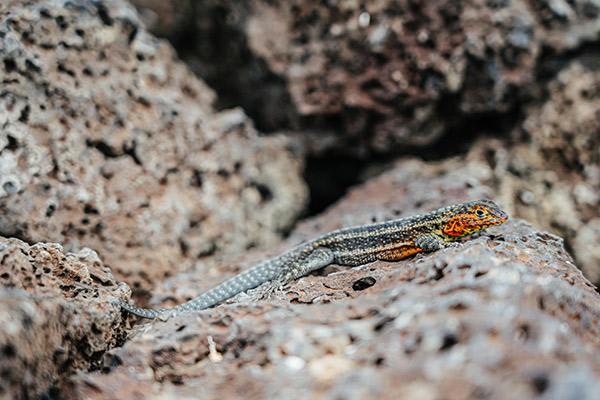
Gardner Bay & Punta Suarez
AM: Located on the north-eastern coast of Hood, Gardner Bay provides an excellent beach for relaxing, swimming, snorkeling, kayaking, and the opportunity to observe sea lions. Here we can also observe sharks in the crystal clear ocean waters.
PM: This rocky land spot sustains one of the most impressive and varied colonies of sea birds in the Galapagos. Along with its southern shore, high cliffs rise from the sea affording the visitor spectacular views of soaring birds and of the blow whole where water spouts up to 50-75 feet into the air according to the intensity of the surf.
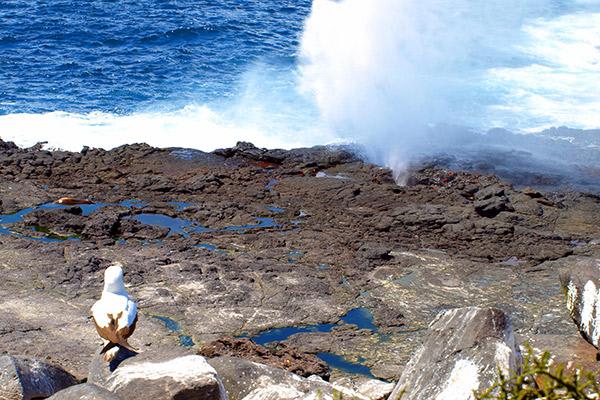
Punta Cormorant, Post Office Bay & Baroness Bay
AM: This site offers probably the best flamingo lagoon in the Galapagos; it is also one of the largest in the islands. There are two tuff lava cones between it, so, the area gets a special atmosphere. There are various species of shorebirds to observe besides flamingos; the most frequent are common stilts, white-checked pintail ducks, and, likewise other migratory birds. It is very interesting to see the two distinct beaches: “The Green Beach” (due to its high percentage of olivine crystals in the sand) and the “Flour Sand Beach” which is made up of coral.
PM: Historically, this site is the location of a wooden barrel placed in the 18th century by the crew of a whaling ship. The mariners, as well as tourists, used it as a post office. The idea is to carry letters or postcards to their destination by hand. At the same time, this site was the landing area for some of the first colonists.
We will continue to the north of the island and will visit Baroness Bay, where we will have the opportunity to Kayak and explore the inlets where seabird nesting sites and sea lion colonies can be found. It is said that Baroness Eloisa von Wagner loved this place and spent several hours watching the horizon. It is a beautiful bay that allows you to breathe in the coastal and volcanic scenery. You will enjoy amazing views from the Sea Star sundeck covering the scenery from Enderby islet to Post office bay, Cerro Pajas, the pool of flamingos, and wide forest of Palo Santo.
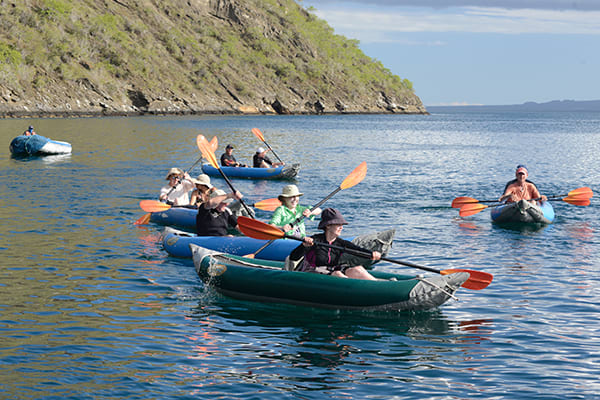
Santa Fe & Plazas
AM: Santa Fe is in the southeastern part of the Galapagos. This island was formed from an uplift instead of a volcanic origin, this is why is mostly flat. Some theories assure this could be the oldest island in the Archipelago. Santa Fe is the home of several endemic species like the Galapagos Hawk, Galapagos snake, Galapagos mockingbird, rice rats, and one of the two species of lands Iguanas of the islands. After disembarkation in the beautiful and clear waters, you will be in contact with one of the many sea lion colonies. You can see many salt bushes along the trail as well giant prickly pear cactus, gigantism is a characteristic of oceanic islands. There are great possibilities of snorkeling with playful sea lions and tropical fishes.
PM: Plazas is at the east of Santa Cruz Island and forms part of two islands known as Islas Plazas. Despite its small size, some of the most interesting and outstanding species of the Galapagos are found here. The Plaza's land iguanas are smaller than their relatives found on other islands. Throughout the island are several hybrid iguanas, a result of crossing a male marine iguana and a female land iguana, they are unique, recognizable at first glance by their black/gray color, with a land iguana’s crest, but face and tail of the marine iguana. The big population of iguanas is due to the presence of tunas, their favorite food. You can see swallow Tailed Gulls nesting along the cliffs with other sea birds as Audubon shearwaters, red-billed tropicbirds, frigate birds, and brown pelicans.
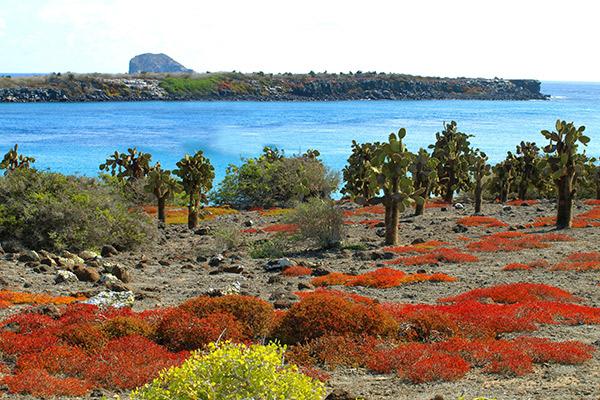
North Seymour & Bachas Beach
AM: Seymour is an uplifted (as opposed to volcanic) island and so is generally flat and strewn with boulders. There are good nesting sites here for a large population of magnificent frigate birds. Blue-footed boobies perform their courtship dance in the more open areas and swallow-tailed gulls perch on the cliff edges. Despite the tremendous surf that can pound the outer shore, sea lions haul out onto the beach, and that you can find surfing.
Watch your step, as the boobies don’t worry much about where they nest, and you might just step on one. The trees are dotted with male frigate birds trying to attract the attention of the ladies by inflating their bright red skin flaps. They sometimes fly in the air to call more attention to themselves. There’s a circular path that takes you through the island to a beautiful, rocky shore where the waves crash a silvery blue.
PM: These two small beaches are in the West of Turtle Cove. Their sand is made of decomposed coral, which makes it white and soft, making it a favorite nesting site for sea turtles. Behind one of the beaches, there is a small brackish water lagoon, where occasionally is possible to observe flamingos and other coastal birds, such as black-necked stilts and whimbrels. The other beach is longer, but it has two old barges abandoned during the Second World War when the USA used Baltra Island as a strategic point to protect the Panama Channel.
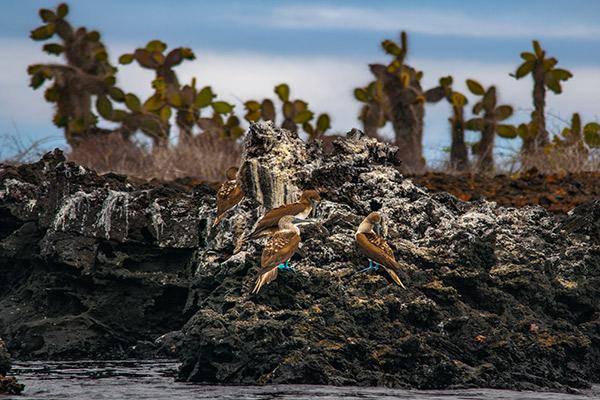
Mosquera Islet & Dragon Hill
AM: Mosquera Islet is located between Baltra and North Seymour Islands and it was formed by a geological uplift, in its narrowest width reaches 160 meters approximately. This islet has one of the largest populations of sea lions, visitors can also observe several species of shorebirds. If you are lucky you can also see dolphins and orcas around this islet.
PM: The visitor site at Dragon Hill has been open for visits since 1993. This site is located in northwestern Santa Cruz Island. It consists of a trail that leads to a hyper-saline lagoon behind the beach. Here you can see flamingos, pintail ducks, and other species of birds. This site has been re-populated with land iguanas from Seymour, Isabela, and Santa Cruz islands. There is a short walk to the Hill, which offers a beautiful view of the bay.
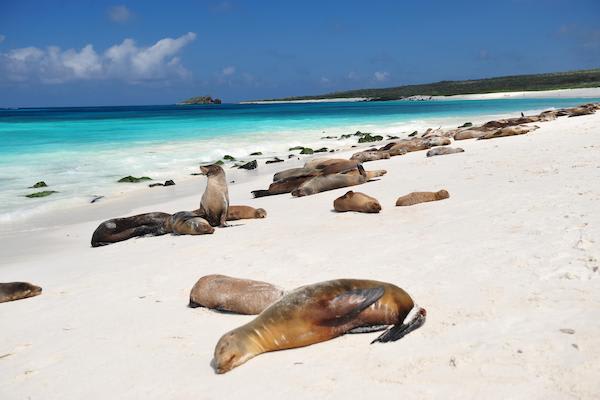
Black Turtle Cove & Chinese Hat Islet
AM: This little cove is located on the northern side of Santa Cruz island, this is a red mangrove lagoon very calm and quiet which made an ideal place as a nursery for many sharks and rays. Its crystal waters allow you to observe large groups of white-tip reef, black-tipped reef and hammerheads sharks, schools of golden rays, and spotted eagle rays. There are no landing sites so the visit is done by panga or kayak. Sea turtles are frequently seen and sometimes they are seen mating in the mangrove-lined waters. Pelicans and Herons are also seen in this area.
PM: This is a small islet (1 sq km) located just o the southeastern tip of Santiago Island. It is a recent volcanic cone, shaped like a Chinese hat when seen from the north side. On the west lava formations, it can be seen, formed under the sea and raised upward, this is why coral heads are found on the lava. This is an excellent visit for the interpretation of geological features such as lava tubes and lava flows. The landscape is covered by sea lions colonies, marine iguanas, and Galapagos penguins.
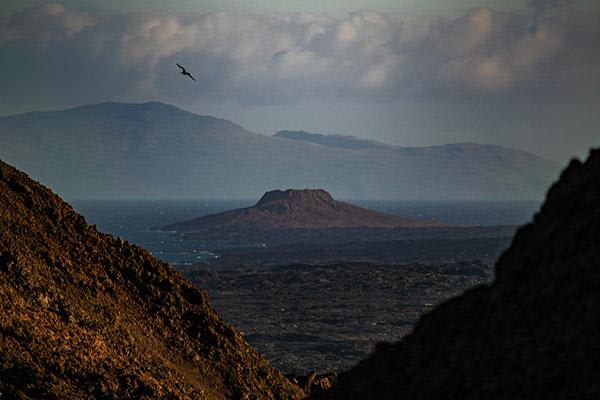
El Barranco & Darwin Bay
AM: The visitor site of El Barranco is located in the southern part of Darwin Bay from Genovesa Island. The trail is on volcanic rock, consists of 1.5 km, and can be done in about 2 hours. The youngest area of the island, from a geological point of view, lies in this area. The cliff is located in the south, is composed of very fragile lava. The natural erosion in these lava flows has become the ideal place for nesting Storm Petrels. You can see two species of petrels that nest in cavities and holes in the lava. One of its main predators is the short-eared owl. The red-footed booby nests only in the outer islands of the archipelago, Punta Pitt, Gardner (Floreana), Wolf, Darwin, and Genovesa. Also present on this island is the masked booby. During the “panga rides” along the cliffs, fur sea lions and several species of seabirds can be seen.
PM: This bay has its origin when the crater of this island collapsed below sea level. The wet landing is on a beautiful white coral sandy beach. This is a favorite island for birdwatchers that allow the following species to be seen: red footed-booby, masked boobies, wandering tattlers, lava gulls, whimbrels, yellow-crowned, and black-crowned lava herons, and yellow warblers. Continuing on the trail, visitors climb gradually to the edge of the cliff seeing Red-Foots nesting in the Mangrove trees below. Bird watching includes sightings of sharp-beaked finches, large cactus and ground finches, Galapagos doves, and swallow-tailed gulls. Reaching the end of the trail, at the cliff's edge, an incredible view of the island and the many birds living there can be observed.
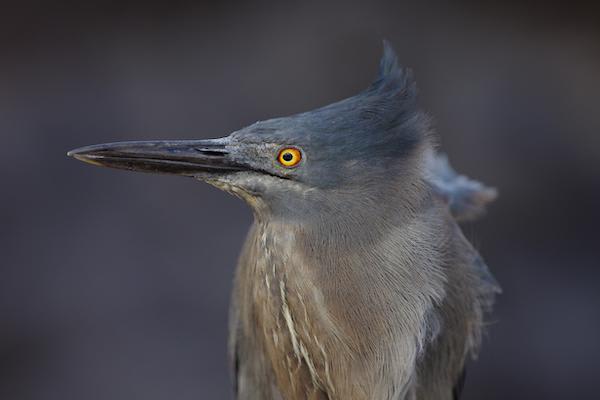
Bartolome & Sullivan Bay
AM: Bartolome Island is situated across Sullivan Bay. It has an altitude of 114 meters, from where we can observe one of the most beautiful sceneries of the Galapagos Islands such as Volcanic cones, lunar-like craters, lava fields, and the famous Toba formed pinnacle eroded by the sea. There is very little vegetation on this island. It has two breathtaking beaches where marine turtles exist and at the base of the pinnacle, as well as a very small colony of Galapagos penguins.
PM: Santiago, also called James, or San Salvador Island is located in the west-central part of the Galapagos archipelago. It is the fourth largest island in the archipelago (following Isabela, Fernandina, and Santa Cruz). Along with some of the large western volcanoes of Isabela and Fernandina, Santiago is also volcanically active, with many young flows and cones to be seen, particularly along the south, west, and east coasts. These may even be seen from the summit of Darwin Volcano and from space. Several historic eruptions have been reported over the last 2 centuries. Santiago consists of two coalesced volcanoes: a typical shield volcano on the northwest end and a low, linear fissure volcano on the southeast end.
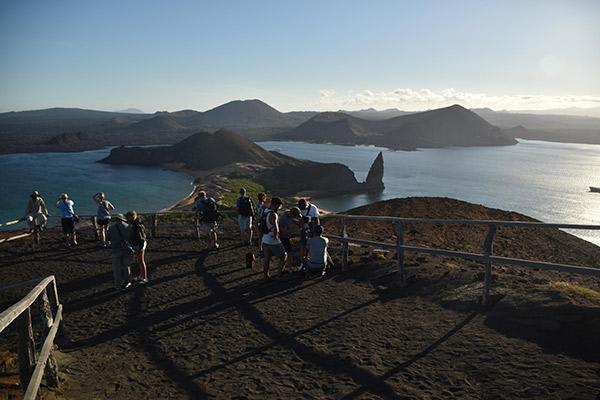
Disembarkation
AM: The trail to the highlands leaves from Bellavista and passes through the agricultural zone, near the National Park boundary, the Miconia Zone, and then goes to the Fern and Sedge zone. With clear weather, this area affords beautiful scenes of rolling hills and extinct. volcanic cones covered with grass and lush greenery all year round.
After the morning excursion, you will be taken to the airport for your flight to the mainland. Baltra airport.
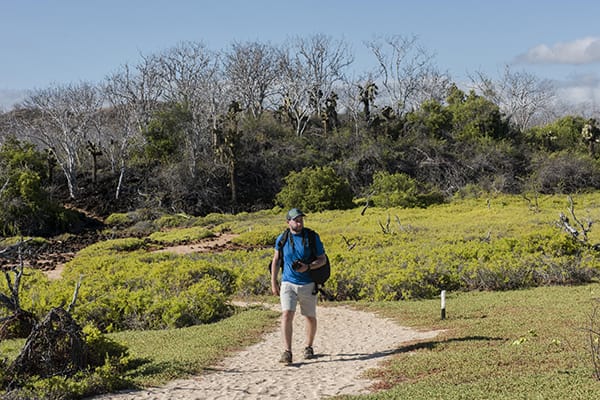
Accommodations
Social Areas
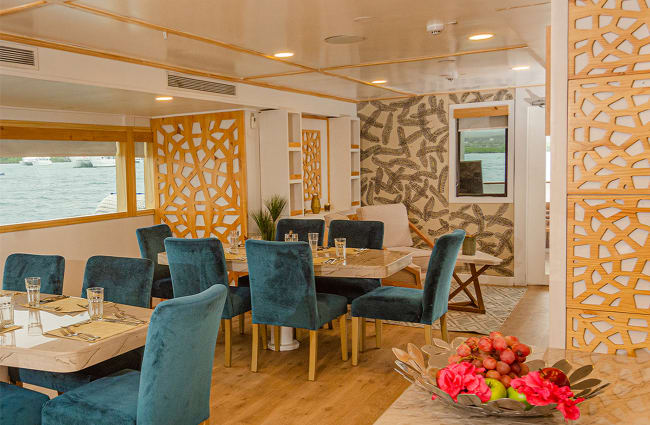
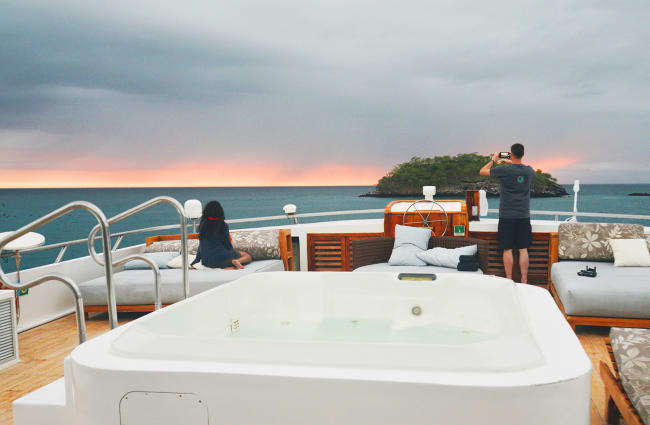




Suites & Cabins










Galapagos Suite
The Galapagos Suites are found on the Upper Deck and are equipped with panoramic windows to enjoy the wonderful landscapes of the islands.
Each suite has a private bathroom, hot/cold water and air conditioning (with independent controls) and a Queen or Twin beds - connected suites are available for families.






Balcony Suite
The Balcony Suites are found on the Main Deck and include personal balcony areas to enjoy the wonderful views of the islands.
Each suite has a private bathroom, hot/cold water and air conditioning (with independent controls) and a Queen or Twin beds. Balcony Suites 5 & 6 are Queen only, and 7 & 8 can be Twin or Queen.











Sea Star Suite
The larger Sea Star Suite on the Upper Deck includes an extended lounge area and gorgeous panoramic windows to enjoy the wonderful landscapes of the islands.
This suite has a private bathroom, hot/cold water and air conditioning (with independent controls) and a Queen bed. The Sea Star Suite offers an excellent combination of space, comfort, and exclusivity.
Related Cruises
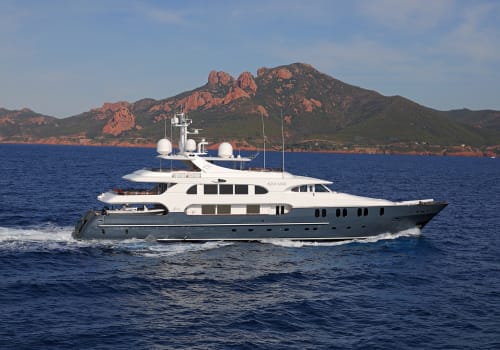
- Galapagos
- Ecuador
Aqua Mare

- Galapagos
- Ecuador
Cormorant II
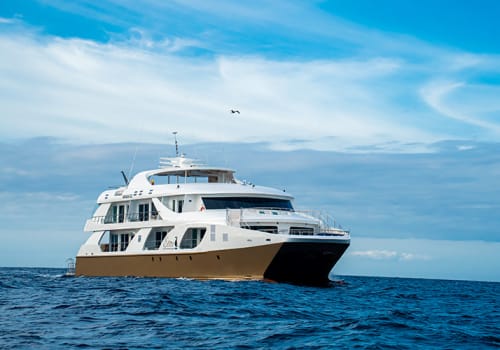
- Galapagos
- Ecuador
Elite

- Galapagos
- Ecuador
Galaxy Sirius
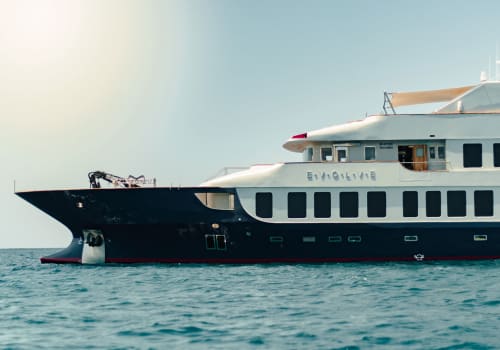
- Galapagos
- Ecuador
Origin, Theory & Evolve
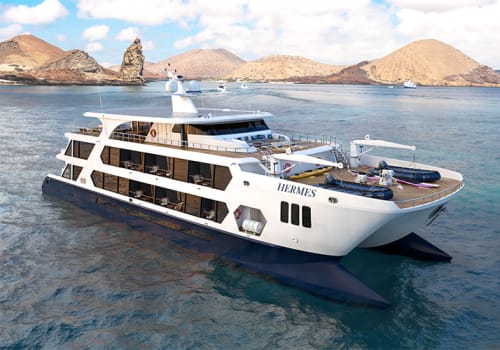
- Galapagos
- Ecuador
Hermes
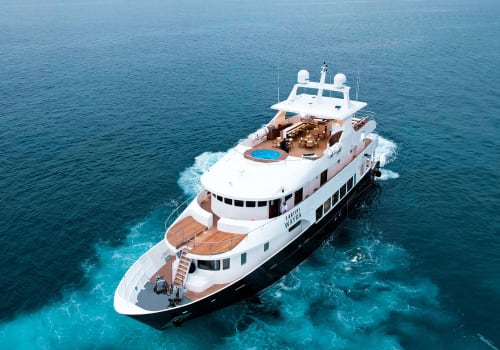
- Ecuador
- Costa Rica
Kontiki Wayra
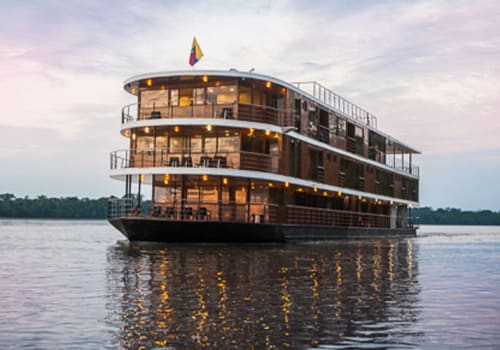
- Amazon
- Ecuador
Anakonda
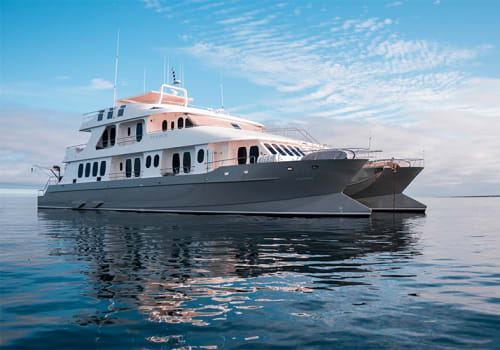
- Galapagos
- Ecuador
Alya
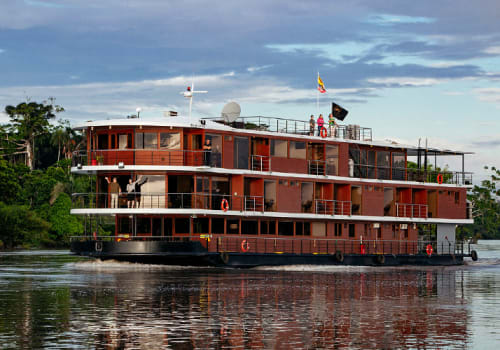
- Amazon
- Ecuador
Manatee Amazon Explorer

- Galapagos
- Ecuador
Endemic
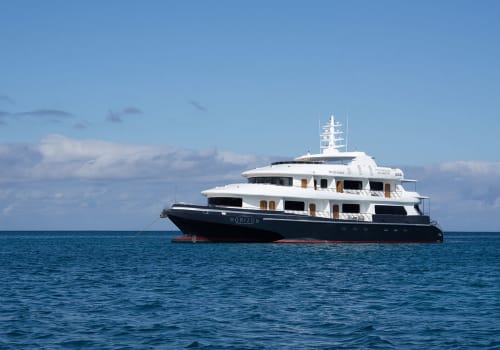
- Galapagos
- Ecuador
Galapagos Horizon
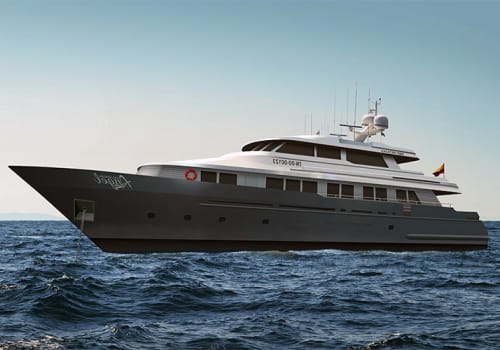
- Galapagos
- Ecuador








